When is the best time to go to Australia?

Nov 27, 2023 • 7 min read
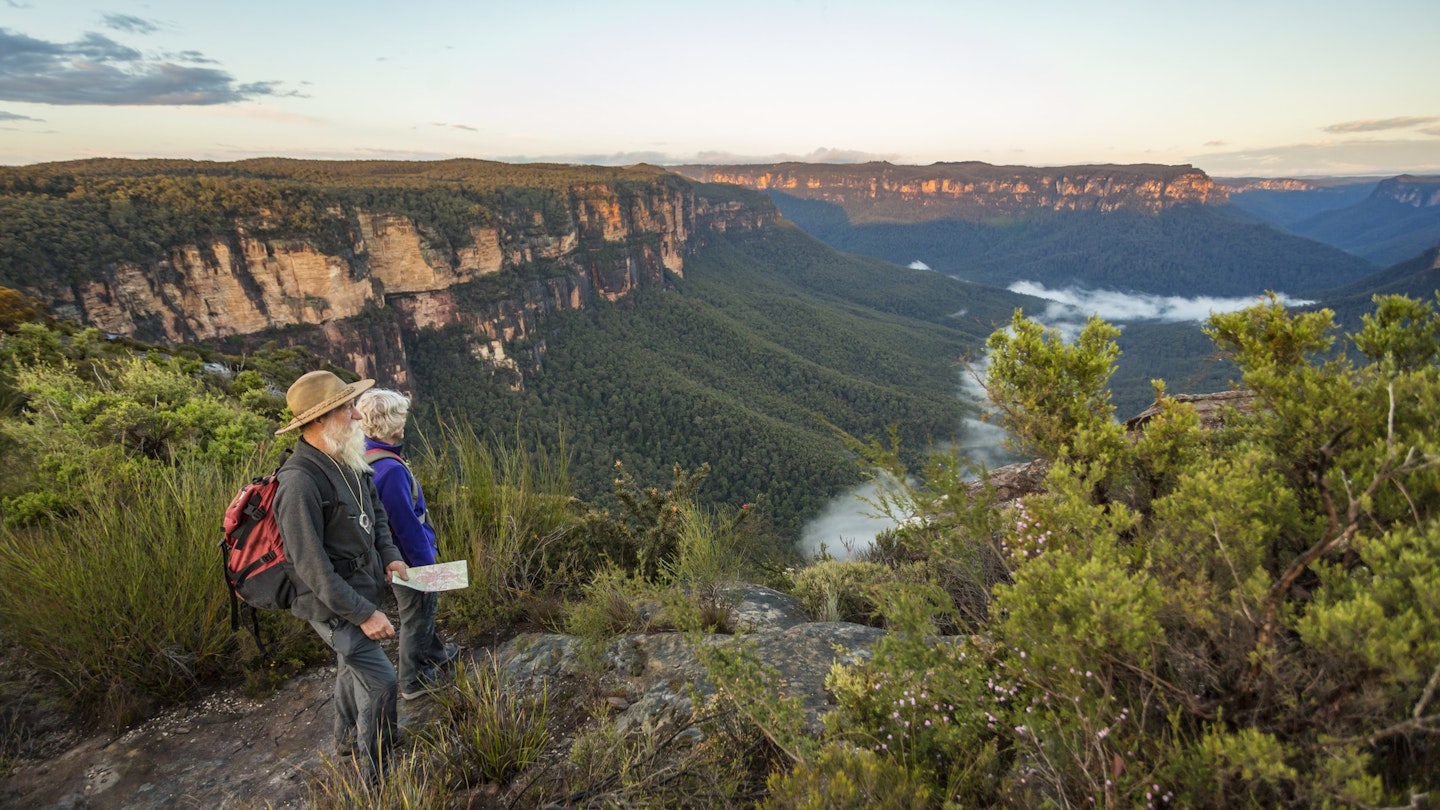
Plan the right time for your visit to Australia with this seasonal guide to what's happening through the year © davidf / Getty Images
As the sixth-largest country in the world, Australia has landscapes that range from dry savannahs and scrubland to lush tropical rainforests.
Each season brings its own magic, depending on where you are and when. Summer can either mean comfortable temperate days, blistering desert heat, or days of extreme humidity and frequent rain. Similarly, winter can deliver both snow or sunshine, depending on your location – and preference.
In short, the best time to travel to Australia depends on what you plan to do . From festivals to whale watching and wildflowers, here’s a seasonal breakdown of what's happening through the year.


December to February is the best time for beach days and festival vibes
Thoughts of Australia often conjure summer scenes of clear skies, brilliant sunshine and the sparkling ocean. December to February brings the hottest months with the longest days. This is also the peak travel season, so come prepared for crowds and premium rates on accommodation, particularly during Australian school holidays (which typically run from late December to late January).
Incredible as they are, there are plenty of ways beyond the beaches to enjoy summer in Australia. As Australia’s tropical north bunkers down for the wet season (with some remote regions such as the Kimberley all but closing up business until “the Dry” returns) this is the time to head south for festivals, sports and sunshine.
Big ticket events in January include the Australian Open tennis tournament in Melbourne and Sydney Festival , a visual and performing arts festival. Also not to be missed are quirky regional events such as Parkes Elvis Festival in rural New South Wales , timed to coincide with the King of Rock and Roll’s birthday.
In February, the world’s second-largest Fringe Festival (after Edinburgh) takes over Adelaide , while the streets are lined with glitter and rainbows for Sydney ’s version of Pride: the Gay and Lesbian Mardi Gras . There are also countless outdoor music festivals (both ticketed and free) across the country during this time, particularly over the New Year’s holiday period.

March to May and September to November are the best months for multi-destination adventures across the country
The shoulder seasons of spring (September to November) and autumn (March to May) can mean more rain in many areas, but much milder temperatures. This makes it easier to experience city and outback life in one trip.
During these periods, you'll find relief from otherwise scorching outback temperatures, making it the ideal time to visit destinations in the Red Centre including Uluru-Kata Tjuta National Park . Meanwhile hiking routes , including Central Australia’s Larapinta Trail, South Australia’s Heyson Trail and Cathedral Gorge in Western Australia’s Purnululu National Park, are a lot more manageable in the cooler months.
If you’re visiting the Kimberley between March and May, you may also be rewarded with glimpses of the waterfalls at the tail end of the wet season.
However, it pays to be aware that schools take two-week breaks, usually at the beginning of April and the end of September. Many Australian families take holidays during these periods, which can affect the availability and cost of accommodations.

June to August is the best time to snorkel on the Great Barrier Reef or hit the slopes
The winter months of June through August are generally the cheapest time of year to travel throughout much of Australia, with fewer tourists and better deals on flights and accommodations in most areas.
There are exceptions to the rule, though. The drop in temperatures and drier weather drives tourism to iconic destinations such as Uluru, as well as Cairns , Darwin and the Kimberley. (It can also be cooler than many tourists expect, with temperatures in the Red Centre dropping below 0°C/32°F overnight. Pack accordingly.)
In Queensland , jellyfish – including the infamous Irukandji – are less prevalent during winter, which also means it’s an ideal time to snorkel or dive on the Great Barrier Reef .
If you’re planning to visit these areas, be prepared to jostle for accommodation as domestic travelers from the southern states also head north to escape the cold, with most school districts taking a two-week break at the start of July.
However, it’s just as popular to head into the cold. While neighboring New Zealand is better known as a ski destination , Australia also has fantastic snow experiences to appease powder hounds. New South Wales’ aptly named Snowy Mountains – roughly 490km (304 miles) from Sydney – is home to Perisher (the largest ski resort in the country) and the nearby Thredbo resort. In Victoria, you can hit the slopes 385km (239 miles) from Melbourne in Falls Creek or take to the steeper runs of Mt Hotham.
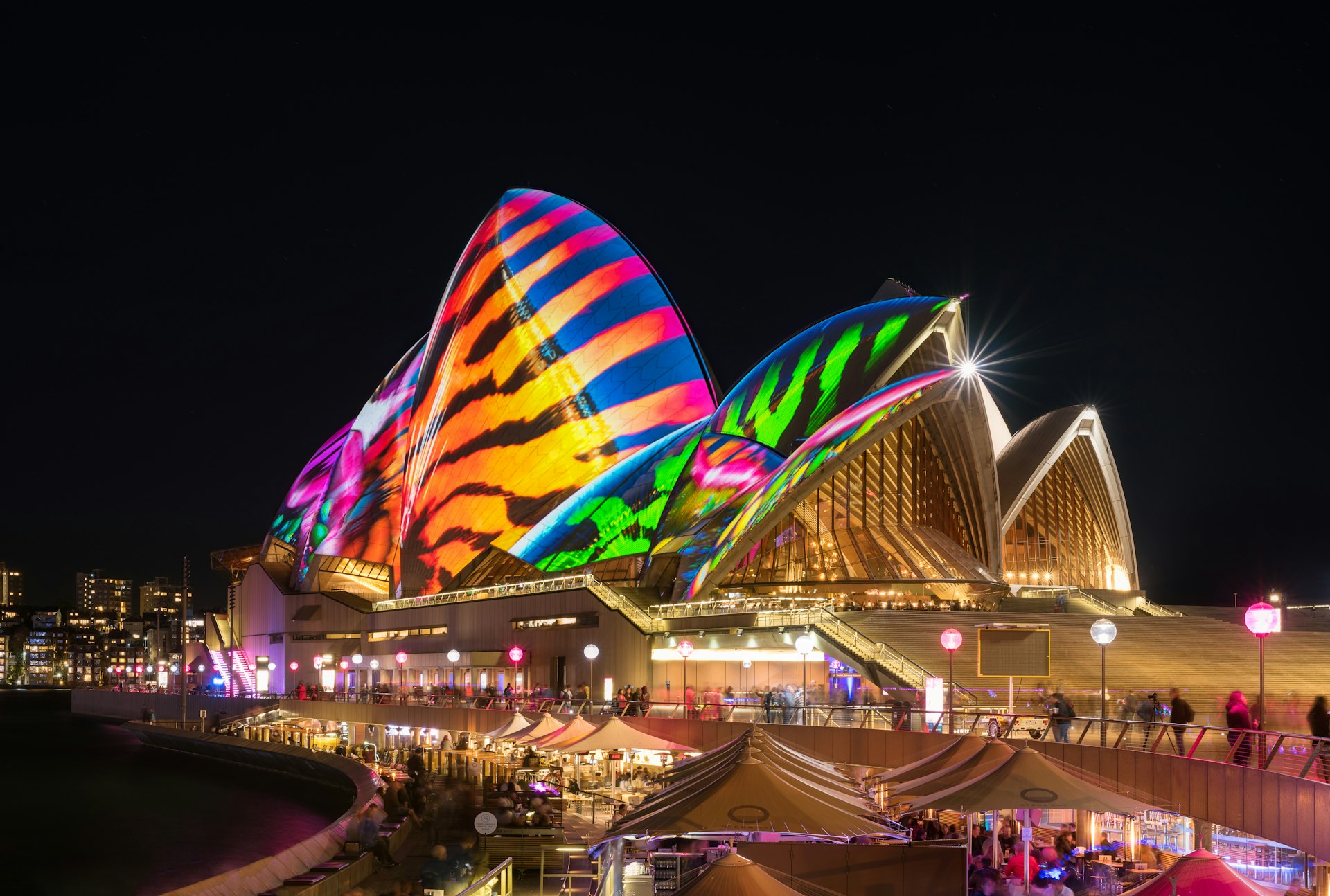
May to September is the time to experience Australia’s winter festivals
Winter doesn’t mean an end to the celebratory vibes. Instead, May to September is a flurry of activity in capital cities and regional hubs across Australia, with festivals to excite avid foodies, art aficionados, music lovers and more.
The return of shorter days is kicked off by Alice Springs ’ Parrtjima Festival in April. The free 10-night festival celebrates First Nations culture with interactive workshops and performances, and sees the MacDonnell Ranges transformed by an incredible light installation.
Next up is Hobart ’s subversive Dark Mofo festival – timed to coincide with the winter solstice in June. It’s one of the country’s most fêted off-season events, with massive bonfires, live music and performance art taking over the Tasmanian city. Dark Mofo is on pause for 2024, but daring visitors can still partake in the annual Nude Solstice Swim and Winter Feast.
Also in June, Sydney’s Vivid Festival draws visitors by the thousands for its light projections and a program of thought-provoking presentations. Similarly, Melbourne’s Rising Festival and Adelaide’s Illuminate both light up the long winter nights with bold projections and installations across the cities, alongside immersive free and ticketed events. Both are held annually between June and July.
On the other side of the country, foodies tuck into the season’s best at Truffle Kerfuffle in Manjimup, WA, followed by the Cabin Fever food and culture festival in July in Margaret River . Finally, if you’re in the Northern Territory in August, you might want to add Darwin Festival of arts and culture to your itinerary.
May to November is prime time for whale watching
If you love marine wildlife, May through to November marks the best months to glimpse whales as they make their twice-annual migration along the coast. Starting from April, tens of thousands of these majestic mammals begin their journey north from their Southern Ocean feeding grounds. They breed and give birth in warmer waters along Australia’s shores, before returning south with their young.
The coastlines of South Australia, Tasmania and Victoria are some of the best places to see southern right whales, while humpbacks and the occasional orca put on a show along the east and west coasts. Western Australia is the place to spot elusive sperm and blue whales.
Another phenomenon you may be lucky enough to see in Tasmania’s southern latitudes at this time of year is the aurora australis or southern lights. Popular places to witness the dancing colors include Cradle Mountain-Lake St Clair National Park , Bruny Island and the secluded Bathurst Harbour.
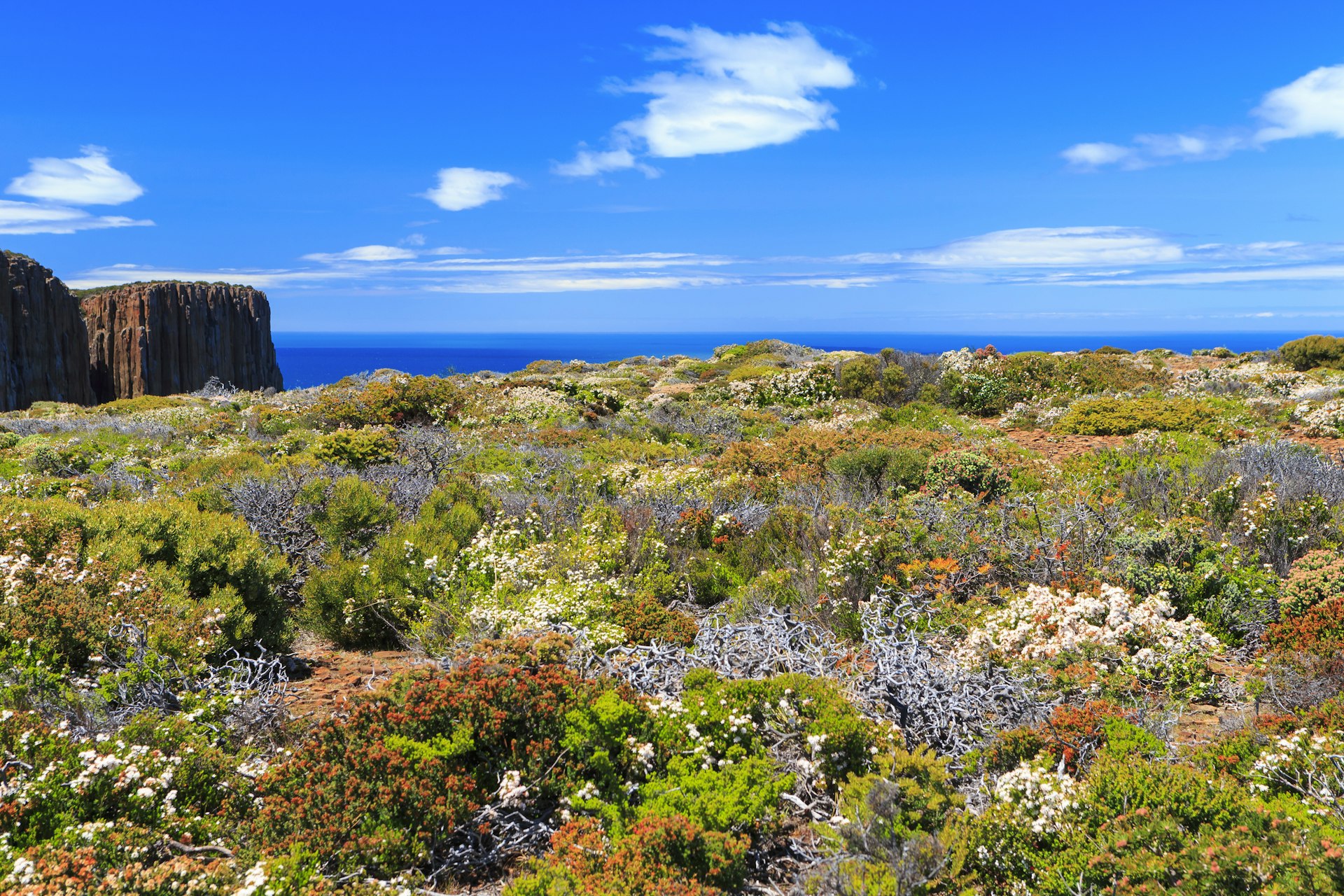
August to October is the best time to see rare and endemic wildflowers
We know what you’re thinking. Flowers, for spring? Groundbreaking. But thousands of Australia’s wildflowers bloom nowhere else on the planet. Case in point are the flowers of Western Australia’s southwest. There are more than 12,000 species, 60% of which are endemic to the region. The Indigenous peoples of this region, the Noongar, acknowledge six seasons of the year, and August to October marks the transition to Kambarang , the height of the flowering season. This is celebrated at Perth’s EverNow Festival in October.
Other notable places to experience the wildflower season include the Blue Mountains and Booderee National Park in New South Wales and Ikara-Flinders Ranges National Park in South Australia. Victoria also boasts numerous spots including the Grampians (Gariwerd) , which is home to one-third of the state’s flora and where the flowering season is known locally as petyan . The Dandenong Ranges are also a popular stop, particularly for those wanting to experience wildflowers and a winery or two of the nearby Yarra Valley .
At this time of year, you’ll find countless regional flower festivals across the country, alongside larger celebrations. Two of the biggest are Canberra’s Floriade (the largest flower festival in the southern hemisphere, hosted September to October) and Toowoomba’s Carnival of Flowers in September.
This article was first published Mar 10, 2021 and updated Nov 27, 2023.
Explore related stories

May 21, 2024 • 11 min read
Looking to travel for Pride festivities in 2024? Here are 12 cities all over the world that offer a plethora of joyous parades, street fairs and parties.

May 8, 2024 • 5 min read

Apr 4, 2024 • 5 min read

Mar 30, 2024 • 4 min read
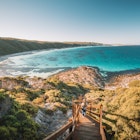
Mar 29, 2024 • 19 min read

Mar 26, 2024 • 8 min read
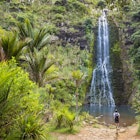
Mar 15, 2024 • 18 min read
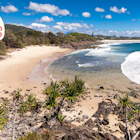
Feb 27, 2024 • 6 min read

Feb 15, 2024 • 7 min read

Feb 9, 2024 • 12 min read
- Search Please fill out this field.
- Manage Your Subscription
- Give a Gift Subscription
- Newsletters
- Sweepstakes
- Destinations
- Australia & South Pacific
The Best Time to Visit Australia for Perfect Weather and Affordable Rates
These are the best times to visit Australia for surfing, hiking, beach hopping, and more.
:max_bytes(150000):strip_icc():format(webp)/Sarah-Reid-0cc15a52771e459e8be5e9eaae794d2c.jpg)
From golden beaches and tropical rain forests to one-of-a-kind wildlife and rich Aboriginal and Torres Strait Islander culture, Australia has a memorable vacation in store for all types of visitors.
Visiting a country so big — complete with three separate time zones and eight different climate zones — requires a degree of planning. To help you get started, keep in mind the following seasons, which apply to most of the continent's tourist hot spots.
- High Season: December to February
- Shoulder Seasons: March to May and September to November
- Low Season: June to August
While city breaks, road trips, and winery visits can be enjoyed year-round, varying regional weather patterns mean that certain highlights — hiking around the iconic monolith of Uluru; snorkeling along the Great Barrier Reef — are best experienced during specific months. No matter what you want to do during your Australia trip, we've got you covered.
Best Times to Visit Australia for Smaller Crowds
Most tourists, especially from the Northern Hemisphere, visit Australia during the country's summer months: December, January, and February. To avoid these crowds, try visiting in winter (Australia's least popular season) or in the spring and fall shoulder seasons.
If you're planning to visit the country's northern coast, opposite rules apply. This region (home to the Great Barrier Reef and the city of Cairns, among other attractions) lies in the tropics. Because of this, the June to August winter months here are warm, dry, and swarming with tourists — both domestic ones on winter vacation and international visitors looking to explore the reef when visibility is at its peak. The summer rainy season, from November to April, is the least crowded time up north.
Best Times to Visit Australia for Good Weather
Every month presents an opportunity to experience a particular region of Australia at its best. If beach hopping is high on your agenda, aim for the warmer months of September to April in New South Wales and southeast Queensland, and November to March in southern states, including the southerly reaches of Western Australia. Summer is also bushfire season, so keep your eye on local alerts during your visit.
While southern states tend to experience four seasons, northern Australia (encompassing the top sections of Western Australia, the Northern Territory, and Queensland) has just two: wet (November to April) and dry (May to October). With road access often compromised during the wet season, the dry period is generally the best time to visit this region, especially on a road trip. The wet period also corresponds with cyclone and marine stinger seasons, which can make coastal travel a challenge. That said, Great Barrier Reef and rain forest tourism in the Cairns region operate year-round, weather permitting. If you want to swim during stinger season — when certain dangerous species of jellyfish populate northeast Australian waters — you'll just need to don a Lycra stinger suit supplied by your marine activity operator.
If you've got your heart set on an Australian outback adventure, the cooler months from May to August are most comfortable. For outdoor adventures in the island state of Tasmania, which has a cooler climate than the mainland, the warmer months from October to March are ideal. If you packed your skis, the snowfields of New South Wales and Victoria are typically open from June until September.
Best Times to Visit Australia for Lower Prices
Flights are usually one of the biggest cost hurdles on a trip to Australia, but there are ways to save. Airfare tends to be lowest during the Aussie winter — June to August — since that's the least popular season for tourism. At any time of year, though, you can find good deals by opting for flights with a layover instead of direct routes (New Zealand, China, and Singapore are some common stopovers) and by watching for sales. Airlines like Virgin Australia and the low-cost Qantas offshoot Jetstar often advertise great domestic deals.
Accommodation prices, meanwhile, can drop significantly in low and shoulder seasons. City breaks in the south's bustling urban centers tend to be most affordable in the winter off-season, too. Though the beaches may be too chilly for a swim, there's still plenty to see at this time of year. Try visiting in May or June to catch the Vivid Sydney festival, when iconic buildings are illuminated by incredible light installations for several weeks.
Best Times to Go Hiking in Australia
Australia's national parks and wilderness areas are laced with hundreds of spectacular hiking trails, many of which are best tackled at certain times of the year. As the summer months can be unbearably hot in Australia's Red Centre, walks in places like Uluru-Kata Tjuta National Park are most comfortably and safely undertaken from April to September.
The opposite can be said for Tasmania, where hiking is more popular during the warmer months, though walkers should be prepared for all types of weather (even snow) throughout the year. Hiking in the lush Gondwana Rainforests of Queensland and New South Wales is typically more comfortable in the drier winter months (particularly June to October), while the best time to wander Western Australia's famed Cape to Cape Track is in the spring (specifically September and October, when wildflowers are in bloom) and autumn (March to May).
Best Times to Go Surfing in Australia
Like in many other destinations around the world, the best months for surfing in Australia don't always coincide with the best months for swimming. If you're just learning how to surf, there's generally no bad time to take a lesson here — though you'll be more comfortable spending hours in the water during the warm summer months of December through February. (This is especially true in Victoria and southern Western Australia.)
For experienced surfers, the offshore winds and more consistent swells of the Australian winter tend to proffer the best conditions, though storms can also generate big waves at any time of year. If you'd rather watch great surfers than join them, try visiting in fall months like March or April — that's when many of the country's biggest surfing competitions, like the Margaret River Pro and Newcastle's Surfest , are held.
Best Times to See Wildlife in Australia
Irjaliina Paavonpera/Travel + Leisure
One of the best things about visiting Australia between May and November is the opportunity to spot migrating whales. Various species make their way up and down the east and west coasts during those months, with different peak times for each species. The best time to book a whale-watching tour in general is August or September, when humpbacks tend to be most active. If you've always wanted to see an orca on the hunt, aim to be in Western Australia's Bremer Bay between January and April.
When it comes to seeing land-based wildlife, it's more about the time of day than the time of year, with the hours of dusk and dawn typically the best for spotting native animals such as kangaroos and wombats. From lorikeets to cockatoos to the iconic kookaburra, Australia's birds (which can often be seen in cities) also tend to sing their hardest when they come in to roost. And after dozing in gum trees all day, koalas are more active in the evenings, making them easier to spot.
Baby animals of all kinds abound in springtime (September to November) across the country. And while sea turtles can be spotted in Australian waters throughout the year, time your visit to Queensland between November and January to see them come ashore to nest, with their babies hatching from January to April.
Worst Times to Visit Australia
Australia's diverse natural beauty and thriving culture mean that there's no bad time to visit. But, depending on your priorities, some times of year can be better than others.
If avoiding crowds and saving money are your top goals, you may want to skip summertime, when tourist numbers and flight and hotel costs reach their annual peak. For beach hopping, avoid the winter — except on the northern coast, where the beaches of Port Douglas and the Whitsunday Islands are at their best in the dry winter months.
International travelers should also note that Easter is surprisingly busy. Australian schools go on break this time of year, and most locals use that time to travel, whether to see family or go on vacation. Since this drives up prices and increases crowds, Easter may be a time to avoid unless you too are there to visit Australian relatives.
Related Articles
The Best Time to Visit Australia
:max_bytes(150000):strip_icc():format(webp)/IMG_2751-c8e99122470c4e26861511881ad3a6cd.jpg)
Prasit photo / Getty Images
Australia's landmass is only slightly smaller than the U.S. contiguous 48 states, covering an area of around 2.9 million square miles. The continent experiences very different climates in the north and south regions, as well as dramatic variation between the coast and the interior, so it's important to plan your visit with the weather in mind. In general, the best time to visit is in the spring or fall due to the fluctuations in temperature and rainfall in the northern and southern extremes of the country. Due to its location in the Southern Hemisphere, Australia also has different seasons to the U.S., with summer from December to February and winter from June to August.
Of course, the best time to visit also depends on what exactly you want to see and do in Australia, from snorkeling the Great Barrier Reef to hiking the mountains of Tasmania . For more details about the time of year you should plan your trip, check out this complete guide.
Weather in Australia
Australia has a reputation as a warm and dry country and that is not too far from the truth, although there are some exceptions. It is generally hotter in the center of the country than the coast and cooler in the south than the north, with regions like the Australian Alps in the south-west even receiving snowfall in the winter.
Most of central and southern Australia has four distinct seasons, with average temperatures between 68 degrees F and 95 degrees F in summer and 37 degrees F to 68 degrees F in winter. Cities like Sydney , Melbourne , Brisbane , and Perth fall into this category and can be easily visited all year-round.
However, the far north of Australia has a tropical climate, with a wet season running from November to March and a dry season from April to October. Destinations like Cairns, the Great Barrier Reef and Darwin fall into this category and are best visited in the dry season.
Even in a southern city like Sydney, summer temperatures can easily reach 100 degrees F, so make sure you are prepared for the heat if you decide to visit in December or January.
Peak Season in Australia
With a population density of only nine people per square mile, Australia is rarely crowded. (For comparison, the U.S. has a population density of 94 people per square mile.) Tourism levels vary throughout the year and across the country, with most domestic travelers generally on the move in summer and international visitors arriving in winter.
Larger cities like Sydney and Melbourne are busiest on holidays like New Year's Eve and during special events and festivals. The Great Barrier Reef is most popular at Easter and in early July, while Uluru is also relatively busy in June and July due to the Australian school vacations and the milder weather. Even so, you will be easily able to find an escape from the crowds if you're willing to venture off the beaten track.
Popular Events and Festivals
Many of Australia's cultural and sporting events are held in the cooler months between April and October, especially in the north of the country. Music festivals, on the other hand, are most common over the summer as Australians celebrate the holiday period. You can find a list of major events below.
Accommodation during city-wide festivals in Brisbane, Sydney, and Melbourne can book up quickly, as can smaller resort towns on the coast and near the major natural attractions at peak times. Booking a week or two in advance is usually a safe bet.
Best Time to Visit the Beaches
If you're planning to spend the majority of your vacation relaxing by the beach, we recommend visiting Sydney between November and May, when average ocean temperatures remain above 68 degrees F. Other popular beach destinations, including the Gold Coast, Byron Bay and Perth, are all warm and sunny almost all year-round.
Further north, the weather allows for swimming no matter when you visit, but you may need to take precautions to protect yourself from dangerous jellyfish. Box and Irukandji jellyfish (also known as stingers) can be fatal to humans and are present along the Far North Queensland coast from around November to May.
Many popular beaches around Cairns remain open with stinger nets in place during this period, but you can also wear a full body wetsuit as a precaution. These jellyfish are less common around islands than the mainland, so the Whitsundays can be a good option if you want to visit Far North Queensland during stinger season.
Best Time to Visit the Outback
In its broadest definition, the outback describes the majority of the Australian continent. This vast, isolated region is largely desert with an arid climate and pockets of vegetation around rivers and mountain ranges. Of course, there are towns in the outback (the largest, Alice Springs , has a population of 25,000), but settlements are few and far between.
Popular places to visit in Australia's interior include Uluru, the Flinders Ranges, the Bungle Bungles, Kati Thanda-Lake Eyre, Lake Mungo, Kings Canyon, and Nitmiluk Gorge. The biggest consideration when visiting these regions is the heat, especially if you're not used to the fierce Aussie sun. For this reason, it's best to plan your trip sometime between April and October.
Highs hover just under 80 degrees F in Sydney and Melbourne, while Perth and Brisbane are generally warmer. In Alice Springs and the Outback, temperatures can be over 100 degrees F. Expect heavy rain in the far north and clear skies in the rest of the country.
Events to check out:
- The Sydney Festival runs for most of the month, with theater, circus, music, dance, and visual art on show.
- January 26 is Australia Day in most of the country, also known as Invasion Day or Survival Day, which marks the date on which the continent was officially colonized in 1788.
- The Parkes Elvis Festival in regional New South Wales attracts thousands of Presley impersonators and fans.
- The Australian Open is a tennis Grand Slam tournament held in Melbourne.
- Mona Foma brings cutting-edge art and music performances to Tasmania.
The climate is similar to January in most of the country: hot, sunny, and perfect for a day at the beach. However, the northern cities of Cairns and Darwin receive their highest rainfall in February, often in dramatic thunderstorms.
- Perth Festival has a focus on performance, literature, music, film, and visual arts.
- Brisbane Comedy Festival is a month-long event that attracts local and international performers.
- Chinese New Year celebrations take place in Sydney, Melbourne and other major cities.
As Australia moves into fall, days remain warm and pleasant in most of the country. Many Australians prefer to take their beach vacations around this time, as you will usually find fewer crowds and less extreme heat.
- The Formula 1 Australian Grand Prix takes place in Melbourne.
- The Sydney Gay and Lesbian Mardi Gras festival is one of Sydney's biggest parties.
- The country's premier world music festival, WOMADelaide , brings global artists to South Australia.
- Melbourne Comedy Festival is one of the largest events of its kind in the world, taking over the city for almost a month.
Temperatures are generally just above 70 degrees F in the southern cities and the rain disappear in the tropical north. The Easter break is a busy travel time in Australia, with many families heading to the beach or the outback.
- Similar to a county fair, the Sydney Royal Easter Show celebrates the state's agricultural produce.
- The five-day Byron Bay Bluesfest attracts 100,000 music fans each year.
- The ANZAC Day public holiday commemorates all Australians and New Zealanders who served and died in the countries' armed forces.
The water is still warm enough to swim on the east coast and clear skies prevail across the country. Low humidity levels make for excellent sightseeing conditions.
- Wide Open Space is an music and arts festival that takes place in the mountain ranges outside Alice Springs.
- Another off-beat music event, Big Pineapple Festival , comes to regional Queensland.
The first month of winter brings chilly temperatures to most of Australia, although the outback and the far north remain pleasantly warm during the day. Average temperatures in Sydney and Melbourne are around 60 degrees F, while Perth and Brisbane are slightly warmer.
- Barunga Festival : This three-day program of music, sport, traditional arts, and cultural activities open to visitors takes place in the remote Aboriginal community of Barunga (near Katherine in the Northern Territory).
- The ski season usually opens on the Queen's Birthday weekend, which is the second Monday of the month.
- Dark Mofo may be Australia's weirdest arts festival, with experimental and challenging performances and exhibitions in Hobart.
Australia's coldest month can still be a good time to travel with daytime temperatures rarely below 50 F and nighttime lows of around 40 degrees F. In fact, winter is the peak season in the outback and the tropical north.
- The Garma Festival of Traditional Culture is held in Arnhem Land to share the culture, art and traditions of the Yolngu people.
- The three-day Splendour in the Grass music festival comes to Byron Bay.
- NAIDOC Week highlights the history and culture of First Nations peoples across Australia.
Cooler winter temperatures continue throughout August, making this your last chance to visit the ski slopes of the Australian Alps.
- Vivid is a popular festival in Sydney known for its light projections on iconic landmarks.
- Darwin Festival is a quirky calendar of music, comedy, theater, art, cabaret and more that makes the most of cooler temperatures in the Top End.
In spring, temperatures bounce back up into the 60s F in southern Australia and even higher in the north and the center. Beach days are back on the agenda and crisp evenings offer a welcome respite from the heat.
- Brisbane Festival is the city's top arts and culture event.
- As Western Australia's wildflowers are in full bloom, Kings Park Festival curates impressive floral displays in Perth.
Like fall, spring in Australia is mild and a good time to travel almost anywhere. Pack a medium-weight jacket and you'll be able to transition from the 85 degree days in Alice Springs to the 50-degree nights in Melbourne.
- Canberra celebrates spring with Floriade .
- Melbourne Fringe Festival supports over 3,000 artists to perform in hundreds of unconventional venues across the city.
The wet season rolls into Australia's north, bringing humidity and plenty of rainfall. However, it is still possible to visit the Great Barrier Reef and the Daintree Rainforest if you're willing to be flexible with your plans.
Event to check out: Australia's top horse race, the Melbourne Cup , is also the social event of the season in Victoria.
The heat and humidity intensifies again in December as Australia heads towards the end-of-year vacation period. Avoid the crowded city beaches in favor of smaller coastal towns.
- Falls Festival rolls into Byron Bay with international headliners, while Meredith comes to regional Victoria and Woodford to regional Queensland.
- New Year's Eve fireworks are a big deal across Australia's capital cities and are best enjoyed from rooftop bars or waterfront restaurants.
The spring or fall are the best seasons to visit, because warm temperatures and rainfall levels tend to be less extreme than in the winter and summer months.
Because Australia sits entirely within the southern hemisphere, summer begins in December and ends in February.
It depends on the destination. Big cities like Sydney and Melbourne are busiest during the December holiday season, while the Great Barrier Reef gets busiest around Easter.
Cairns & the Great Barrier Reef: Planning Your Trip
The Best Time to Visit Brisbane
The Best Time to Visit the Great Barrier Reef
The Best Time to Visit Melbourne
Complete Guide to the Great Barrier Reef
April in Australia: Weather, What to Pack, and What to See
10 Foods to Try in Cairns, Australia
East Coast vs. West Coast: Which is the Best Australian Road Trip?
May in Australia: Weather, What to Pack, and What to See
Your Trip to Brisbane: The Complete Guide
June in Australia: Weather, What to Pack, and What to See
The Best Time to Visit Cape Town
October in Australia: Weather, What to Pack, and What to See
The Best Time to Visit Perth
December in Australia: Weather, What to Pack, and What to See
February in Australia: Weather, What to Pack, and What to See

- Big Island of Hawaii
- Cook Islands
- French Polynesia
- New Zealand
- Tahiti, Moorea, Bora Bora
- My Favorites
- My Specials
- Best honeymoon destinations
- Best time of year to visit Tahiti
- Best time of year to visit Fiji
- Best time of year to visit the Cook Islands
- Best time of year to visit St. Lucia
- Best time of year to visit Vietnam
- Best time of year to visit Thailand
- Best time of year to visit Bali
- Best time of year to visit New Zealand
- Best time of year to visit Australia
- Best time of year to visit the Seychelles
- Best time of year to visit the Maldives
- Best Jamaica all-inclusive resorts
- Best Fiji all-inclusive resorts
- Overwater bungalows
- Detailed visa requirements by country
- Tahiti, Bora Bora, and Moorea Destination Weddings
- Fiji Destination Weddings
- Best resorts in Tahiti, Bora Bora, and Moorea
- Best resorts in the Dominican Republic
- Best resorts in Fiji
- Best resorts in Jamaica
- Best resorts in Kenya
- Best resorts in New Zealand
- Best resorts in the Seychelles
- Hawaii - Maui
- Hawaii - Kauai
- Hawaii - Big Island
- Hawaii - Oahu
- Dominican Republic
- Puerto Rico
- St. Kitts and Nevis
- St. Maarten
- Turks and Caicos
- Virgin Islands - US
- Virgin Islands - British
- Bali & Indonesia
- Ask an Expert
Testimonials from Piper's clients:
Best time of year to visit australia.
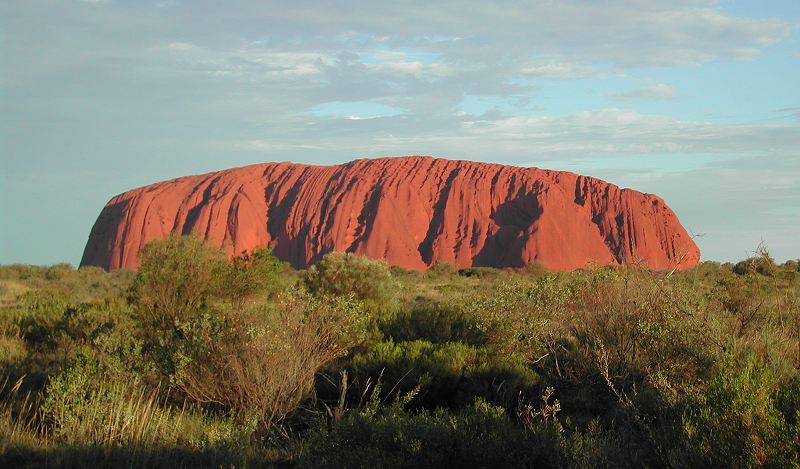
- Airfare by month
- Travel specials
- See all resorts in Australia
- Temperature by month
- Precipitation by month
- Best time to go by region
- High season/low season prices
- Map of all resorts
Australia is enormous, with a wide range of climates. The northern states are typically warm year-round, while the southern states have cooler winters. December to February is summer; March to May is autumn; June to August is winter; and September to November is spring.

Typical airfares from LAX to Sydney, Australia

Best time of year to go to different parts of Australia
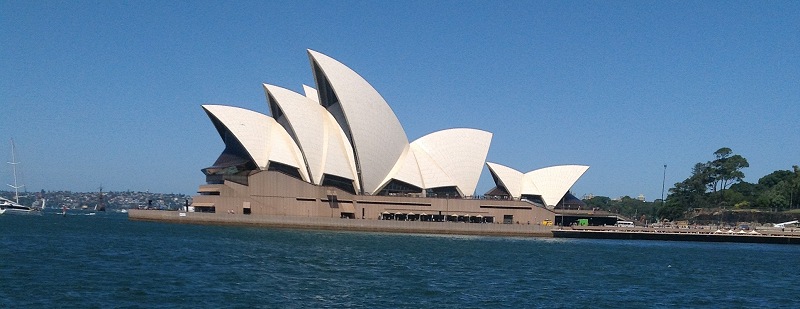
Sydney , in New South Wales, is in Australia's temperate zone. The Great Dividing Range is a major climate factor, as it creates 4 distinct zones: the coastal strip, the highlands, the Western Slopes and the flat countryside to the west.
Sydney typically sees about 340 sunny days a year, with humidity in summer around 65%.
Pictured above is the famous Sydney Opera House .
Tasmania , the island southeast of the main continent, the climate is mild and temperate. With no part of the island more than about 75 miles from the water, the ocean has a big effect on the climate. Because it's much farther from the equator than the rest of Australia, the seasons are more distinct. January and February are pretty dry, with temperatures averaging about 70F.
See the Australia tourism website for a detailed description of the seasons in Australia.

Storms in Australia
In Cairns, on the coast of Queensland, tropical cyclones can occur sometimes between November and May. Around Alice Springs and Ayers Rock, you can see thunderstorms, hail and dust storms in the spring months. In Western Australia, tropical cyclones can occur between November and April--most commonly though in January and February.

Airfare and Resort Prices
High season is from about Christmas through the end of January, when children are on their summer holidays, and the popular resorts fill up with the locals. In the north, June through August is peak season as Australians from the southern areas travel north to escape winter. Typically the airlines will discount airfares April through June.
Water temperature, SCUBA diving and surfing in Australia
On the Great Barrier Reef, you can dive year-round, although the best conditions for diving are from late August to early December. For liveaboard diving, the best time to go is July through November. In the Coral Sea, the visibility is best in June and in September. If you want to see the Minke whales, they're seen mostly from June to August. From April through June, the whale sharks can be seen near Ningaloo, in Western Australia. Australia Tourism has an excellent reference on dive locations and regions here .
- We'll talk with you to find out what you're looking for, what you like/don't like, etc.
- We'll use our first-hand knowledge of the destination to pick out a handful of resorts we think you'd like
- We'll create a custom mini website for you, with photos, videos, maps, etc. of the resorts we are recommending
- We'll follow up with you to help you make your decision
- We'll go to work with our suppliers to get you the best deal available on what you've decided on.
Map of all resorts in Australia

Travel Guide
- Things to Do
- Best Hotels
- Best Restaurants
- A Nature Guide
- Entry Requirements & Customs
- Getting Around
- Visitor Information
- Tips on Accommodations
- Special-Interest Vacations
- Calendar of Events
- Sustainable Travel & Ecotourism
- Health & Safety
- Getting There
- Tips for Families
- Tips for Gay and Lesbian Travelers
- Tips for Senior Travelers
- Tips for Student Travelers
- Tips for Travelers with Disabilities
- Staying Connected
- Suggested Itineraries
When to Go in Australia
When it is winter in the Northern Hemisphere, Australia is basking in the Southern Hemisphere ’ s summer, and vice versa. Midwinter in Australia is July and August, and the hottest months are November through March. Remember, unlike in the Northern Hemisphere, the farther south you go in Australia, the colder it gets.
The Travel Seasons
Airfares to Australia are lowest from mid-April to late August — the best time to visit the Red Centre and the Great Barrier Reef.
High Season - The peak travel season in the most popular parts of Australia is the Aussie winter. In much of the country — particularly the northern half — the most pleasant time to travel is April through September, when daytime temperatures are 66[dg]F to 88[dg]F (19[dg]C – 31[dg]C) and it rarely rains. June, July, and August are the busiest months in these parts; you ’ ll need to book accommodations and tours well in advance, and you will pay higher rates then, too.
On the other hand, Australia ’ s summer is a nice time to visit the southern states, and even in winter temperatures rarely dip below freezing.
Generally, the best months to visit Australia are September and October, when it ’ s often still warm enough to hit the beach in the southern states, it ’ s cool enough to tour Uluru, and the humidity and rains have not come to Cairns (although it will be very hot by Oct).
Low Season - October through March (summer) is just too hot, too humid, or too wet — or all three — to tour the Red Centre. North Queensland, including Cairns, suffers an intensely hot, humid wet season from November or December through March or April. So if you decide to travel at this time — and lots of people do — be prepared to take the heat, the inconvenience of potential flooding, and the slight chance of encountering cyclones.
Australian National Public Holidays
On national public holidays, services such as banking, postal needs, and purchasing of alcohol might be limited or unavailable. There also may be additional holidays as declared by individual states and territories, such as Melbourne Cup Day: Based on the country ’ s most famous thoroughbred horse race, Melbourne Cup Day is celebrated the first Tuesday of November, and the race is nicknamed “ the race that stops the nation. ”
* New Year’s Day, January 1. Expect the usual fireworks and festivities to begin the night of December 31 to ring in the New Year.
* Australia Day, January 26. This national day recognizes the First Fleet ’ s arrival in 1788, when 11 ships made their way from England to establish a colony here in Australia.
* Good Friday, the Friday before Easter. The Christian commemoration of Jesus ’ crucifixion and his death. In Australia, Good Friday is observed the first Friday after the full moon (on or after Mar 21).
* Easter Monday, day after Easter Sunday. The Christian commemoration of Jesus ’ resurrection from the dead.
* Anzac Day, April 25. ANZAC (Australian and New Zealand Army Corps) Day recognizes those who have served the nation in times of war.
* Christmas Day, December 25. When Christians celebrate Jesus ’ birth. Note: If Christmas is on a weekend day, the next Monday is termed a public holiday.
* Boxing Day, December 26. Originally a British tradition involving gift-giving, Boxing Day is now an Australian holiday, and some sports kick off their seasons on this date. If Boxing Day falls on a Saturday, the next Monday is deemed a public holiday. If it falls on a Sunday, the next Tuesday is the holiday.
Steer Clear of the Vacation Rush
Try to avoid Australia from Boxing Day (Dec 26) to the end of January, when Aussies take their summer vacations. For popular seaside holiday spots, hotel rooms and airline seats get scarce as hen ’ s teeth, and it ’ s a rare airline or hotel that will discount full rates by even a dollar.
Note : This information was accurate when it was published, but can change without notice. Please be sure to confirm all rates and details directly with the companies in question before planning your trip.

- All Regions
- Australia & South Pacific
- Caribbean & Atlantic
- Central & South America
- Middle East & Africa
- North America
- Washington, D.C.
- San Francisco
- New York City
- Los Angeles
- Arts & Culture
- Beach & Water Sports
- Local Experiences
- Food & Drink
- Outdoor & Adventure
- National Parks
- Winter Sports
- Travelers with Disabilities
- Family & Kids
- All Slideshows
- Hotel Deals
- Car Rentals
- Flight Alerts
- Credit Cards & Loyalty Points
- Cruise News
- Entry Requirements & Customs
- Car, Bus, Rail News
- Money & Fees
- Health, Insurance, Security
- Packing & Luggage
- -Arthur Frommer Online
- -Passportable
- Road Trip Guides
- Alaska Made Easy
- Great Vacation Ideas in the U.S.A.
- Best of the Caribbean
- Best of Mexico
- Cruise Inspiration
- Best Places to Go 2024

When Is The Best Time To Visit Australia
Michela Australia Travel Planning 14
A detailed guide on the best time to travel to Australia
When is the best time to travel to Australia ? I often get this question from first-time travellers, and it’s impossible to answer it in one sentence because of many factors. Australia is a vast continent located in the southern hemisphere, which means summer starts in December, as opposed to winter in the northern part of the globe. Many factors factor into the best time to go to Australia.
Before answering this question, I need to spend a few words about its geography and Australia’s weather. With double the size of Europe, the Australian continent stretches from North to South and East to West, covering over six thousand kilometres and crossing different climate zones. As climate and weather conditions change, Australia has all types of weather and climates, so there are multiple answers to this question. On this page, you can read about the various kinds of Australian weather by month, climate zones, and seasons to give you an idea of the best time when planning a trip to Australia .
Australia Weather Map
With summer starting in December and ending in March and winter starting in June and ending in September, Australia has three central climate and weather zones:
- Southern coastal regions from West to East Cities like Perth, Sydney, Melbourne, and Adelaide are in the West’s southern coastal regions to Australia’s East Coast. Here winter is between June and August, and summer months are between December and February. While the west coast has excellent and stable weather all year round, the east coast is more changeable.
- Inner central areas of the Outback When we refer to the Outback regions, we generally think of the Red Centre, but the Outback areas are much larger. They cover most of the entire inland territory of Australia. So winter from June to August has the coldest nights with warm days.
- Tropical Queensland, Northern Territory and North Western Australia . Northern Australia and North West Australia are also Outback areas with cold winter nights and warm days and wet with high humidity on hot summer days. You must be sure to travel off-season in spring between September and November or in autumn between March and May. Winter the best time of year to travel to tropical Australia.
Below is a recap of the Australian weather zones and seasons to help you identify the ideal time to travel to Australia.
Australia in December through February (Summer)
In December, January and February, the Australian weather has the hottest temps, which is the time with the warmest months throughout the country. Temperatures can reach 35-45°C all over the southern coastal areas. In the Outback areas (central Australia), temperatures can reach over 45°C with high air humidity.
Travel season is the peak season, with six weeks of school holidays. It is the busiest time and most expensive to travel around Australia for locals and international travellers alike. So if you do not like crowds or want to save money, avoid going to Australia in Summer from December to February.
However, travelling to Australia in summer have benefits too. Here are some:
- Summer is the best time for visiting Tasmania as temps are around 25-28°C and pleasant for hiking and enjoying the outdoors.
- Most outdoor events occur in summer in South West Australia, South Australia, and the South East Coast of Australia .
- Spending Christmas in Australia is also extraordinary as it is different to celebrate the festive holidays on the beach.
- If you are a beach lover and love all water sports, the Australian summer is the best time for planning a trip along the entire East Coast of Australia, including the Gold Coast . However, the Gold coast lies in a subtropical destination with great temperatures.
Australian Weather in March through May (Autumn)
The weather in Australia in March, April and May is pleasant, mostly all over the country. Temperatures can vary a lot, though. On average, they are around 20-25°C; they gradually decrease towards the winter months. This is my favourite time of the year to visit Australia. Here are some excellent reasons why you should the weather in autumn is great to travel around:
- It is the best time to visit many Australian Outback Regions , including Uluru, as the weather is mild, with warm days and cold nights.
- It is the ideal time to visit South Western Australia and South Australia on sunny days. It’s also a great time of the year for tasting local produce and wine and seeing many events.
- Another part of Australia worth visiting between March and May is the Top End and the Kimberley in North Western Australia .
April usually marks the end of the rainy season, so this month is great if you still want to see some lush green vegetation and gorges filled with water and enjoy active birdlife and wildlife in the beautiful Australian national parks .
Australian weather in June, July and August (Winter)
The Australian winter starts in June and goes through July and August. The winter months have the coldest weather in Australia as far as the southern regions are concerned. Winter in Victoria and Tasmania can have icy weather, sometimes with temperatures around zero degrees. For this reason, it is not ideal to visit this part of Australia in winter.
The winter months in Australia are suitable for visiting the following areas:
- The Australia Top End , with Darwin and the Kakadu National Park . Most Top End events are held between July and August. The weather in the Top End is dry, with very low humidity and cool nights.
- North Tropical Queensland , with lots of sunshine and the best dry weather you can have.
- Central Australia and North-Western Australia for the Outback regions. Here temperatures are around 20-25°C, ideal for Australia’s best road trips and camping.
Winter in Northern Australia is a busy time of the year; everyone wants to escape the cold weather of the south and spend a few days at the sunny beaches of North Australia. That’s why I would plan a trip to Northern Australia to secure cheap flights and the best accommodation and tours.
Australia in September through November (Spring)
From September to November, the Australian weather is good almost everywhere. In Northern Tropical Australia, spring, it’s a transitional period from the dry winter months into the rainy months, December to February. With pleasant temperatures around 20-30°C from the West Coast to the South East Coast , this is the best time to go to Australia, especially South Australia, South East Australia, Queensland and Western Australia.
- South Western Australia is best to enjoy between September and November, with wildflowers blossoming. Moreover, you can enjoy whale watching, hiking, biking, and outdoor activities.
- South Australia, Victoria, New South Wales, and the entire East Coast of Australia . Spring and autumn have mild weather, and this time of year is not as busy as in the summer months when locals take their Australian holidays.
- Spring is the best time for road trips, biking, walking tours, and outdoor activities.
The best time of year to visit Australia is March to May and October to December.
Best time to visit Australia’s top destinations
Apart from cities like Melbourne and Sydney, which can be considered city hubs for most travellers coming to Australia, these are some of the most popular destinations on the trip itinerary of many visitors. I have experienced the following places with all kinds of weather and can give you my best tips for making the most of these iconic places in Australia.
When to visit Melbourne
When planning your trip to Australia to the main Australian cities like Melbourne and Sydney, consider all the following tips. Below is a breakdown of the best time of the year to visit Sydney and Melbourne.
March to May and October to December is the best time to spend time in and around Melbourne . It implies milder weather with cooler temperatures. An advantage is that there are many great festivals and events and fewer tourists. A con is that the weather can be rainy and windy too.
The weather in Melbourne in summer is okay because it allows for planning more activities outdoors. Still, due to the ever-changing weather (the famous four seasons in one day that you typically experience), it can go from a rainy summer day with lots of humidity to a dry and hot day with temperatures over 40°C—the so-called scorcher.
Best time of year to visit Sydney
March to May and October to December are the best months to visit Sydney . In Summer, it is way too busy, and Sydney’s weather can also be quite hot. If you plan a beach holiday, the summer months of January and February are probably the best. And if you love to celebrate New Year’s Eve in style and don’t mind the crowds, then you should visit Sydney in the summer.
When to go to Cairns and the Great Barrier Reef
Located on the North East Coast of Australia, the Great Barrier Reef is a tropical destination that attracts many Australians throughout the country in the cold winter months of June, July and August. They are also the busiest months for international visitors from Europe and the US. It is the busiest time for tropical Northern Australia.
So, as a general rule, avoid travelling during these months and prefer April and May, marking the beginning of the dry season. I visited Cairns and Cape Tribulation in September.
The weather was just perfect and quite pleasant. I would also book at least 3-6 months ahead to secure accommodation and the best car rental deals. December to February is the worst time of the year to visit North Tropical Queensland because of the wettest and hottest weather with the highest humidity you can get in Australia.
When to travel to Northern Australia
As said, the best time to visit the Top End of Australia is winter. Still, August, the peak season with the Darwin Festival, is also costly, and finding accommodation at a reasonable price won’t be easy. The main attractions, Kakadu National Park and Arnhem Land are located a 3-hour drive from Darwin; I found this region a bit tricky to plan. From December to February, roads are closed in all national parks; tours are limited from October to April.
Local tour guides will tell you that the best time to visit Kakadu is in March or April when waterfalls are still filled with water. While this is true, it is risky.
You may end there in March and get stuck in town for days because of the rain (this is what happened to me). The best solution is to travel off-season and soon after the rainy season.
May to June is the best time to visit the Kakadu National Park , in my opinion. If you want to go camping in the Kakadu National Park with its lush green and beautiful gorges, this is the best time to travel to the north.
The Red Centre and Uluru
Among all Australian destinations, Australia’s Red Centre is high on the list of most travellers, and a road trip to Uluru represents, for many travellers, the journey of a lifetime. June to August is packed with tourist loads; airfares are the highest, and accommodation is limited. So if you cannot avoid travelling to the Red Centre during this time of year, you must book at least six months ahead to get a good flight deal. December to February is a no-go due to the excessively high temperature (up to 45°C or 115F).
I experienced Uluru twice at the end of March and once at the end of April, which was terrific. I highly recommend a visit in April-May as this is, in my opinion, the best time to visit Uluru.
Temps are around 25-27°C or 77-80F, making it perfect for walking around the Uluru base and enjoying its stunning settings and outdoor activities. When temperatures start going over 30°C or 86F, you will be limited to morning explorations.
Another benefit of planning a trip to Uluru between April and May is that these are the less busy time of the year, cheaper and less crowded.
Be sure you don’t plan your visit for 25th April, a popular public holiday in Australia. This time of the year is busy with families and schoolchildren. June-August is also great for the weather but extremely busy regarding visitors.
The Best Time For a Great Ocean Road Trip
One of the most famous drives in Australia is the Great Ocean Road . However, it is a destination you need to plan with the right weather conditions. Winter can get rainy and windy, so I recommend travelling on warm sunny days to make the most of this fantastic coastal drive.
From October to December and February to March, it is a good time of the year when the weather is more predictable. Avoid the peak season and school holidays between Christmas and January, as finding accommodation (including campsites) along your way will be difficult.
If you can only drive the Great Ocean Road over Christmas or public holidays, follow this advice for booking rental cars .
Best time to visit Broome
Broome is a popular destination for southern Australians who want to escape the cold winter between June and August. It is a beautiful destination and one of the most scenic landscapes you can see in Australia. Again the dry season with cooler weather from April to September is the best time to visit Broome in North-West Australia. The hot and steamy weather makes it a no-go from December to March when it rains heavily.
Many years ago, I went to Broome in February and couldn’t walk because of the high humidity. Being Broome, the getaway to the Kimberley Outback, you need to know that no tours will operate in the Kimberley region between October through March.
So my tip is to visit Broome in May when the dry weather starts; the landscape shows all its splendour, and the green vegetation, the red earth, and the blue sky create a fantastic contrast. July and August are also excellent times to visit Broome . August is less busy than in other months. Nights are cooler at 15°C and lovely warm days with about 28-30°C.
Final thoughts about when to visit Australia
Having travelled extensively around Australia on my own, covering over 100 km from west to east, from bottom to top, I have established that March to May and September to November is the best time to visit Australia hassle-free.
It is, in fact, the milder months when you can travel almost anywhere around the country, with warm days in the southern regions and dry, sunny days in Western Australia and dry weather in Northern Australia. Before planning any trip around Australia, check out this site for the weather zone forecast in Australia .
Please share it on Pinterest for later!
For more info on how to plan your trip to Australia , check these below pages:
Australia Travel
Back to Rocky Travel
First published in 2013, last updated in Jan 2023
If you find this article helpful for your trip, I’d appreciate it if you could support Rocky Travel, book tours, accommodation, and rental car, or purchase my book using the links below. Thank you!
BOOK YOUR TRIP WITH THESE RESOURCES
Get Travel Insurance For Your Trip
Travel with peace of mind: 👉 Compare and Buy Travel Insurance .
Book Accommodation WorldWide
Find the best deals for hotel, homes, villas with 👉 booking.com .
Join Small Group Tours Of Italy For Over 50
Explore Italy with our 👉 Small Group Tours Of Italy .
Find The Best Tours Deals For Australia
Scout for the best guided trips and tours with our 👉 Australian Tours Guide .
Plan & Book Your Australian Adventure
Create the perfect Australia Trip Itinerary with 👉 Your Australia Itinerary eBook and/or Book A Trip Planning Call .
Plan Any Trip With These Resources
Check out our 👉 Travel Planning Bible .
Michela Fantinel
→ Michela Fantinel
Related Posts
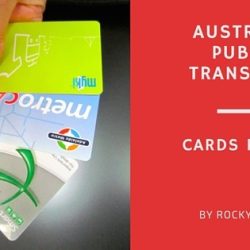
Australia Travel Planning
A Review of Australia Public Transport Cards
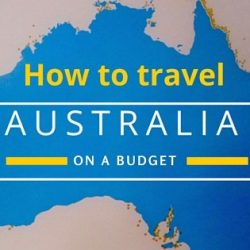
How To Travel to Australia on a Budget

A Guide to Long Term Travel in Australia
14 comments.
Keith Kellett October 9, 2013 @ 12:10 pm
Agree with all … especially if visiting the ‘Top End’ or TNQ, the ‘run-off’ is the optimum time
Robert Bruce March 6, 2014 @ 12:31 am
With two and a half weeks, we spent time in the following areas, driving as much as we could so we could set our own pace.Cairns. The great Barrier reef and world famous rainforest are of special interest here. Sydney. Be sure to spend a day hiking around the Blue Mountains. Red Center Ayers Rock is a place you need to put on your list. Tasmania – Is best to visit in the early spring or early fall. This area will give you a whole other look at the amazing continent with its 19th century history and amazing wilderness areas.
Pete November 14, 2014 @ 4:19 am
we have such a wide and varied climate here. scorching summers and cool temperate winters. A land of diversity, thats why I love Australia so much.
Marvin Sowers January 31, 2016 @ 12:24 pm
We are visiting Sydney in April and it looks like that may be a perfect time to visit. Good to know….and thanks for the information!
Rocky Travel Australia November 15, 2016 @ 11:18 am
April is a quite time of the year for visting Australia but still with warm temps so if you plan to visit Sydney and more Australian cities then March-April is a great choice!
Karyn Jane March 17, 2016 @ 1:11 am
This is a great post! The landscape is so varied here and a lot of people forget that we are an entire continent. There are so many things to be taken into account when visiting, depending on what areas you will be in.
Rocky Travel Australia March 21, 2016 @ 10:11 am
Absolutely. It is essential to pick the right time to visit places in Australia! Thanks for stopping by, Karyn!
Mar November 15, 2016 @ 8:23 am
We are looking to visit Melbourne, Sydney and Cairns (for snorkeling at the great barrier reef.) Options are April or September what would you advise? I know the temperatures vary in each location but looking for pros and cons thank you in advance
Rocky Travel Australia November 15, 2016 @ 11:15 am
September is the best time for visiting the Cairns region and North Tropical Queensland, as it’s the end of the dry season with warm days and cool nights. Whereas in April, the weather can still be wet in the tropics. If you plan to spend more time in Northern Australia and love snorkelling and outdoor activities, t would go with September. April is not bad for all three regions, but please consider that Melbourne and Sydney temps will be around 15-20°C max. I hope that helps!
Ellie March 16, 2018 @ 5:21 pm
I’m dreaming and already planning a trip to Tasmania. I’d like to enjoy the beach holidays, meet unique local wildlife and spend not much money. Is it possible at all? You recommend summer as the best season for the warmest temperatures, and that’s what I need for a seaside vacation. But it must be too expensive and too crowded, so could I possibly choose November or March instead? Are there any recommendations for the best wildlife experience? Thanks in advance for an answer.
Rocky Travel Australia May 6, 2018 @ 3:36 pm
Hi Ellie, sorry for the late reply! For a wildlife experience in Australia, it depends on where you are! The best I can recommend is Wilson Promontory National Park; if you plan a trip to Melbourne in March, that would be just perfect!
Kathy February 23, 2019 @ 6:31 pm
Planning to visit Tasmania this year and this article is helpful for us to decide when is the best time of the year to visit. Thank you very much.
Linda Evans January 16, 2020 @ 12:28 pm
I was planning on visiting Adelaide in July and August with my two sons who will be 8 and 14. I was hoping to make a base for the summer and travel out to activities. However, reading your information I can see that this mightn’t be the best weather wise. I’m not necessarily looking for really hot weather, just warm, mostly rain free so I can get outside with my sons and away from the dreaded xbox. Where would you suggest please?
Rocky Travel Australia February 7, 2020 @ 1:19 pm
Hi Linda, thanks for stopping by and leaving your message. If you travel between July and August, the best places where the weather is fine but not humid and rainy would be Northern Australia, between Darwin and Cairns, where temps will be between 25-30 C. Otherwise, you could also hit Brisbane and the Gold Coast, but temps would be between 18-23 C. It really depends on what you are wanting to do in Australia. You can visit this page with more Australia Itinerary Ideas or get my Australia Itinerary Guide Book . If you have more questions feel free to come back to me by sending in a message via the contact page here on the site. Thanks.
Leave a Reply Cancel reply
Your email address will not be published. Required fields are marked *
Privacy Overview

When’s the best time to visit Australia? Here’s your season-by-season guide
The best time to visit Australia comes down to what type of weather you prefer and what you’d like to do when you get there. From inspiring wildlife and bustling cities to iconic natural attractions, this unique place offers a rich variety of adventures. Plus, given how big it is, you can experience almost any type of weather on one whirlwind tour. This all means that any time is a great time to visit—and we’ve got Australia tours designed to highlight the country’s diverse beauty year-round. Ready to take the trip of a lifetime? Read on for our season-by-season guide to the Land Down Under.

Explore our Australia tours

4.6 out of 5 stars

4.5 out of 5 stars

4.7 out of 5 stars
More travel inspiration

See reviews Enquire now
Email: [email protected]

When is the Best Time to Visit Australia?

- Planning Your Australian Holiday
- Arriving in Australia - OZ Holiday Planner
The bonus of coming from the Northern Hemisphere to Australia for a holiday is that our seasons are the opposite of the USA, UK, and Europe. If you’ve never been able to experience a summer Christmas, Australia is a great place to do it!
Take a look at our breakdown of Australia’s weather by State.
When it is Summer or Winter in the northern hemisphere, the opposite season prevails in Australia, a principle that becomes harder to apply to the transitional seasons of Autumn and Spring. To confuse things further for those planning an Australia vacation downunder , the four seasons only really exist in the southern half of the country outside of the tropics.
Here, you’ll find reliably warm summers at the coast with regular, but brief heat waves in excess of 40°C (104°F). Head inland, and the temperatures rise further. Winters, on the other hand, can be miserable, particularly in Victoria, where the short days add to the gloom. Tasmania is cooler year-round: while weather in the highlands is unpredictable at all times, summer is a reliable time to explore the island’s outdoor attractions.
As a result, the best time to visit Australia depends on where exactly you plan to go.
Australia Seasons
In Australia, the seasons are defined by grouping the calendar months in the following way:
- Spring - the three transition months September, October, and November.
- Summer - the three hottest months December, January, and February.
- Autumn - the transition months March, April, and May.
- Winter - the three coldest months June, July, and August.
More info: When is the BEST season to travel to Australia?
High Season for Tourists
April to September is High Season for Tourists. Depending on what you are looking for, visiting Australia during the high season can be good or bad. Everything is open and running and the weather is mild and dry in most of the country, with warm days. However, the high season can mean crowding and chaos at popular sites, and you'll need to plan and book far in advance to avoid disappointment.
Low Season for Tourists
October to March is the low season for Tourists. Low season in Australia is less crowded, but it's can be an uncomfortable time of year to visit. Much of the country, including the Red Center and much of Western Australia, is simply too hot and humid to travel comfortably. Many hotels and attractions also close during this time, and floods are also a serious problem in much of the country. However, if you visit at this time, many hotels offer discounts.
Jellyfish Season
If you are coming to Australia for a beach holiday and you planning on swimming, don't visit during jellyfish season, when the waters are unsafe. During this time, which takes place at different periods throughout the country, box jellyfish swarm the oceans and their excruciating sting are usually very painful and in some cases deadly, Jellyfish season typically lasts from October to April in northern Australia and November to March in the north of Western Australia and Queensland.
Crazy January
Though January weather in much of Australia is warm, it's not an ideal time for travel. Most Aussies go on holiday and school kids are on holiday. Much of Australia is overwhelmingly hot in January - it's also high season for mosquitoes and flies.
Australian School Terms & Public Holidays
During Australian Public & School Holidays seat availability on flights, tours and accommodation may be limited, unavailable or priced very high due to high demand. You may like to consider avoiding travel during Australia’s Public & School Holidays.
Australian School Terms & Holidays
Australian Public Holidays
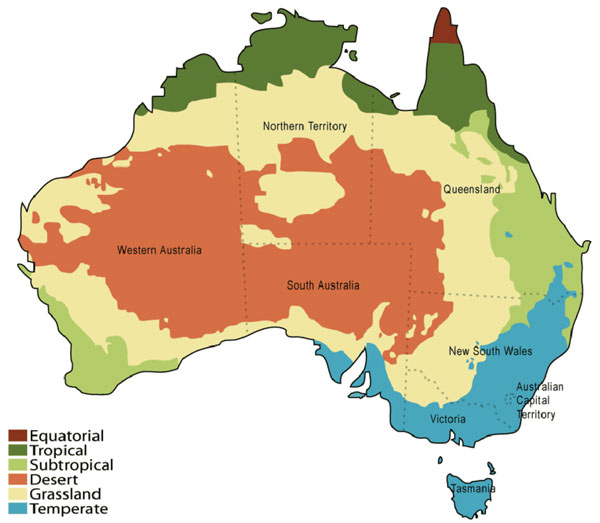
When is the Best Time to Visit Australia? - by Region
The best time to visit t he northern territory.
The Northern Territory plays host to a handful of the country’s largest deserts, including the Great Sandy Desert, Tanami Desert, and the Simpson Desert, each contributing to an expansive landscape that is uniquely Australian. With terrain ranging from powerful rivers and expansive wetlands to barren deserts and sandstone escarpments, much of the Northern Territory has been shaped by a monsoonal climate that cultivates extremities, ensuring one of the most dynamic and exciting environments on earth.
Try these Northern Territory Self Drive Itineraries
1) The Red Centre
Australia’s interior is an arid semi-desert with very little rain, high summer temperatures and occasionally freezing winter nights. The best time to visit Australia's Red Centre, Uluru and Kata Tjuta is between May and September when the maximum temperature during the day is usually between 20°C (68°F) and 30°C (86°F). The weather is cooler, making it easier and safer and much more pleasant to walk and there is very little rain. Overnight temperatures can be very cold during winter, so be sure to bring some warm clothing with you.
August and September are usually the best months to see the park’s wildflowers in bloom. October to March can get extremely hot, with daytime temperatures regularly exceeding 35°C (95°F). However, the hot weather also brings storms and rain, which fill the waterholes and start Ulu r u’s waterfalls flowing – a truly spectacular sight!
If you visit the park during the summer, make sure you drink plenty of water and do not walk after 11.00 am. Summer also brings large numbers of flies to the desert, so you might want to consider wearing a protective head net (these can be purchased when you arrive).
Weather in Uluru could be considered extreme. Summer temperatures can get very hot with temperatures soaring to 40 ° C (104 °F) and 45 ° C (113 °F) in the desert. On the contrary, during the winter, temperatures can drop to below 0 ° C (32 °F) Here’s a rundown of what temperatures you could expect when you visit, depending on the season and the months you choose (all temperatures are in Celsius and are rounded off).
Spring – High from 26 ° C-34 ° C (79 °F-93°F) and low from 17 ° C-9 ° C (62 °F-48°F) Summer – High from 35 ° C-38 ° C (95 °F-100°F) and low from 17 ° C-21 ° C (62 °F-69°F) Autumn – High from 23 ° C-28 ° C (73 °F-82°F) and low from 17 ° C-8 ° C (62 °F-46°F) Winter – High from 22 ° C-20 ° C (71 °F-68°F) and low from 5 ° C-3 ° C (41 °F-37°F)
2) Darwin, Kakadu, Arnhem Land, Katherine & Surrounds
Known for its tropical weather, Salt Water Crocodiles, rich Indigenous culture, abundant fishing spots, National Parks and laid-back Australian lifestyle; the Top End is blessed with more than its fair share of world-class destinations and attractions. Monsoonal wet and dry seasons provide the region with one of Mother Nature’s most punishing environmental contrasts, shifting from dry heat and scorched earth to astonishing downpours and flooded plains on a half-yearly cycle.
Wet Season (November – April)
During the wet season, the Top End is subject to unprecedented volumes of rainfall. Characterised by intense and often visually dramatic weather events, the average temperatures range from 25 ° C (77 ° F) to 33 ° C (91 ° F) and are amplified by a sharp rise in humidity (in excess of 80%).
Visiting the Top End during the wet season provides travellers with some interesting dilemmas. The increased rainfall results in spectacular waterfalls pumping with life and lush green landscapes that engulf much of the region, including Kakadu and Litchfield National Park. Locations such as Jim Jim Falls and Twin Falls will also reach their visual best during these months. - Katherine Gorge as a visually impressive destination during the wetter months. The whole area's waterfalls are amazing when it’s so wet, the wildlife really comes out but the downside is r oads can often be closed and certain areas won’t be accessible.
Dry Season (May – October)
During the dry season, the Top End boasts warm sunny days and crisp winter nights. Temperatures typically range from 21 ° C (70 ° F) to 32 ° C (90 ° F), with a drying heat throughout the day complemented by substantially lower levels of humidity (around 60 – 65%) providing arguably the most comfortable time of year to visit.
With the lowest temperatures falling between May and July, the Top End will never be more accessible than it is during these months. Regions that were previously off-limits from flooding or dangerous conditions have now reopened and visitors are free to explore every nook and cranny to their heart’s content.
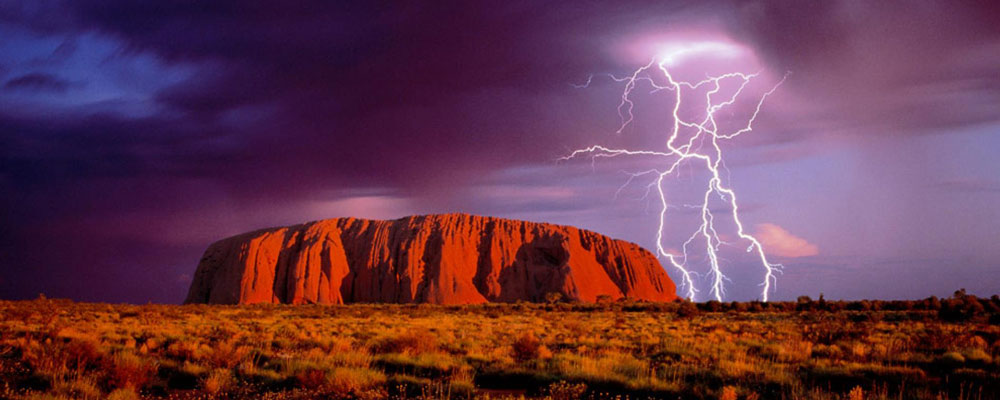
The Best time to Visit Western Australia
Visit the South of Western Australia (below the Tropic of Capricorn) between November to March (summer) when it doesn’t rain as much and the temperatures are high. Above the Tropic of Capricorn visit Between May and October (during the dry season) when the temperatures are milder.
Itinerary Ideas for a Western Australia vacation
1) The Coral Coast
North of Perth you'll find the Coral Coast: more than 1,100 kilometres (680 miles) of white beaches, outback desert, laid-back coastal towns and the world's largest fringing coral reef: World Heritage-listed Ningaloo. The best time to visit the Coral Coast is generally between March to October due to warmer weather as well as the concentration of seasonal activities.
March-May: Coral Spawning March-July: Whale Sharks June-November: Manta Rays June-November: Humpback Whales November-March: Turtle nesting and hatching July and October: Wildflowers
2) Margaret River
The Margaret River region is just under 3 hours drive South from Perth, which, by Australian standards, is a medium level drive. With 4 four distinct seasons, the mild Mediterranean climate not only makes Margaret River a premium wine growing region, but also a year-round choice for holidaymakers.
In summer, there is little rainfall and the average maximum temperature is just under 30°C (86°F). Hot days are usually cooled off by afternoon sea breezes. Summer evenings are balmy to mild with temperatures around 15°C (60°F). Also in summer, the stunning beaches seduce swimmers and kite surfers.
Most of the rainfall occurs in the winter but winter still has many glorious sunny days. Winter enjoys mild temperatures that average 16°C (61°F) to 18°C (64°F) with some days in the early ’20°C (70°F). Winter evenings are mild and average above 8°C (46°F) but are still cool enough to enjoy a log fire.
Spring and autumn are lovely and warm with plenty of sunny days. Autumn sees a flurry of arts and wine-inspired events. In spring, the wildflowers put on their own dazzling show.
3) The Kimberly
Between April to October is the best time to be in the Kimberly, go too early and you will be in the wet season and may experience road closures. Many of the region's attractions are also closed during the wet season. Go too late and you risk the closure of attractions due to bush fire.
June and July are warm but not hot, with cool to cold nights, during these times it can get down to single-digit temperatures in the Bungle Bungles (where you cannot have a fire), many people consider these months to be the best.
August is probably the best month, school holidays are over, the days are nice and warm which makes for great swimming, the nights are still cool which makes great camping and the water quality is still really good.
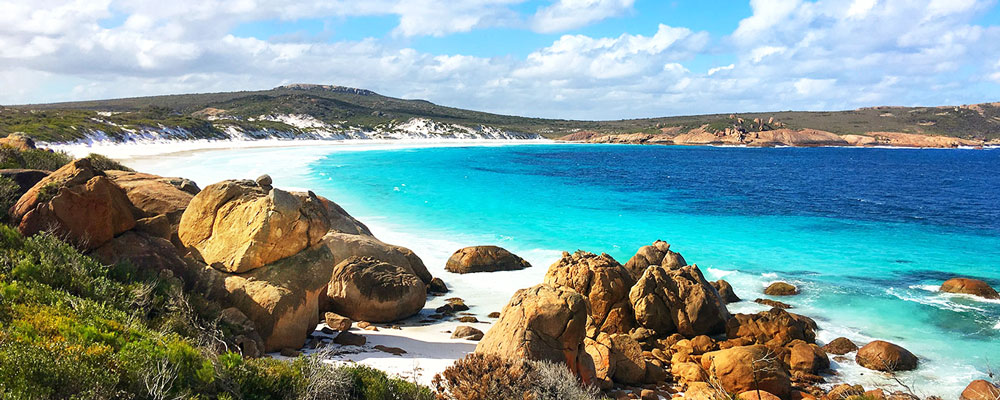
The Best Time to Visit Queensland
1) tropical north queensland .
Tropical North Queensland, or the regions of Cairns, Port Douglas, and Palm Cove, are hot and humid year-round and temperatures averaging around 31°C (88 °F) . The weather falls into two seasons.
The best time to visit is during the hot and cloudless Dry (from April to November), with moderate coastal humidity maintaining a pleasant temperature day and night and cooler nights inland. Rainfall is low and you can expect gorgeous sunny days, making it the most popular time to visit the region. The ocean is free of marine stingers during this time, so you can swim almost anywhere without nets or suits for protection.
Cairns’ rainy season is from November to April; this is when you will get near-daily rainfall but far fewer tourists. The “Build-Up” to the rainy season in November or December before the heavy rains can be very uncomfortable, with stifling, near-total humidity. During the wet season, the colours of the rainforest are at their brightest and the waterfalls are full and spectacular. The water around the Great Barrier Reef is calm at this time of year, so it’s perfect for snorkeling and diving.
2) The Whitsundays Islands
In the Whitsundays the wet season about matches that of Cairns, running November to April, however, the added concern are stingers. Stinger season runs approximately between October and March every year, and during this time a stinger suit must be worn when swimming in the Whitsundays, including on day trips to the Great Barrier Reef and Whitehaven Beach or just off the beach at Daydream Island.
The temperature remains even throughout the year, with July and August the coolest months at 22°C (71 °F) and the warmer, summer months reaching no higher than 31°C (88 °F) .
3) The Sunshine Coast
Stretching from the coastal city of Caloundra, near Brisbane, to the Great Sandy National Park in the north, the Sunshine Coast is home to pretty villages surrounded by beach, Noosa, and Maroochydore. Noosa receives less rain than its northerly sisters and is, therefore, more suited to year-round travel. As stingers don’t come this far south, there is no concern when getting in the water. Noosa’s rainy season also parallels that of Cairns and the Whitsundays, as most of Queensland.
4) The Gold Coast
While it may be tempting to visit the Gold Coast during the summer months of December to February, these periods can become uncomfortably warm and provide inconsistent tropical weather. Also, due to the destination’s popularity internationally, these periods become incredibly crowded with families travelling during the school holidays.
Itinerary suggestions for Queensland & Great Barrier Reef

The Best Time to Visit Tasmania
If you want to know about the best time to visit Tasmania , you need to keep asking every five minutes. Because that is how often the weather can change. It’s so different from the rest of Australia, it is almost astounding. It has maritime and mountain climates, with rainforest thrown into the mix.
For many people, the best time to visit Tasmania is the driest, warmest months, December through February. Don't let the tourist troops and pricier rooms let you down, as summer in Tassie brings various festivals and is perfect for hiking and scuba diving.
March and April, Tasmania’s autumn, is also a good time of year to visit. This is usually the driest time of year, and the days are still warm and long, but the nights are beginning to cool down and everywhere is much quieter, this is also the time of year for yachting, wines, and fresh Pacific oysters. However, this is also mating time for Tasmanian devils so the chances of seeing them in the wild are less than at other times of the year.
Tasmania Self Drive Itineraries

The Best Time to Visit New South Wales (Sydney)
New South Wales enjoys a subtropical climate, bringing hot summers and cool winters, with plenty of year-round sunshine across the state and enough rain to keep the land green and fertile. In general, the coast is the warmest place to be, while the inland mountains can experience snow and frost in the depths of winter. However, moving westwards, you get into some really dry areas, and even venture into the desert. so be prepared for all eventualities.
September - November
As the days heat up, New South Wales comes alive with greenery and life. Days are warm and sunny, but not too hot, so now’s the time to explore the Blue Mountains, chill out on the beaches and tour the Hunter Valley. Sydney is gorgeous in the springtime too – the flowers are blooming, the birds are singing and the city is enveloped in a canopy of purple jacaranda trees.
With beach-worthy summers, breezy autumns, fresh winters, and colour-filled springs, it’s no surprise Sydney is consistently ranked among the world’s most liveable cities. Whether you prefer the heat of the summer for optimal beach weather or cooler, crisp winter mornings for a busy day of sightseeing, Sydney will have the perfect climate for you to plan your visit.
When is the best time to come to Sydney - Summer in Sydney has a habit of throwing together strings of scorching hot days while winter brings with it some icy-cold mornings and evenings.
September and October
September in Sydney marks the beginning of Spring and brings along with it all the hallmarks that make this season so pleasant, the days range from cool to warm, humidity is low, and there's annually a high volume of sunny days in the month.
September is statistically the month of the year in Sydney with the lowest amount of rainfall - a reason why the 2000 Sydney Olympic Games were held in September - and this extends largely through to the majority of October as well.
Temperatures during this crossover period average a comfortable maximum of 21.0°C (69.8°F) and a slightly chilly yet bearable 12.3°C (54.1°F) minimum. As a result, it's basically shorts and t-shirt weather during the day time, with only some light additional layers needed in the evenings.
The end of September signals the beginning of the Australian school holiday period. From the end of September to the beginning of October, you may see a rise in prices for accommodation, flights, and various attractions, however, if you're planning to visit with the kids during the holidays this would be one of the best times to do so.
Explore Sydney & surrounds: New South Wales Self Drive Itineraries
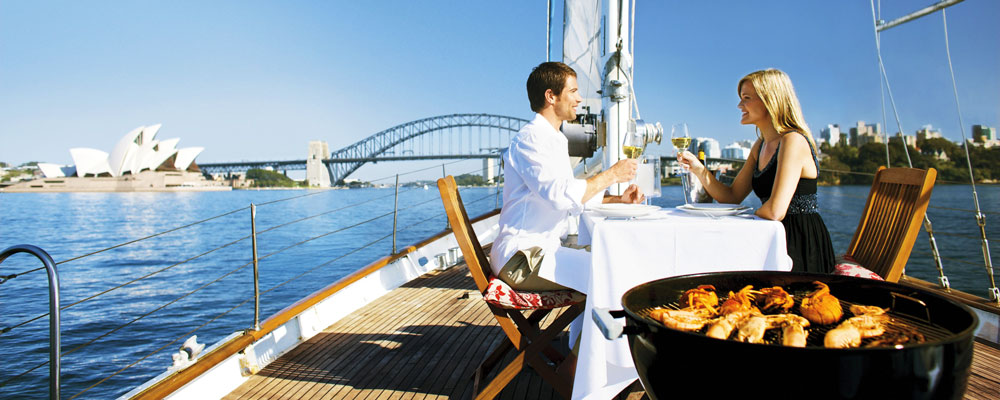
The Best Time to Visit Victoria (Melbourne)
Despite being approximately the same size as the United Kingdom, Victoria has a surprisingly varied climate, ranging from semi-arid in the north to temperate along the coast, producing hot to mild summers and cool winters, with a good amount of rain to keep the land looking green and lush.
It’s common for Melbourne to experience all four seasons in one day – one minute it can be sunny before it quickly turns to rain. It’s often warmer and dryer the further north you travel. Summer is hot with warm nights. Winters, on the other hand, are rather cool and rainy, but they continue to offer many sunny days.
With its variable climate, Melbourne hots up December to February (summer), cools down March to May (autumn), chills out June to August (winter), and warms up again September to November (spring). Melbourne's top temperatures are usually in January and February. Those months are often dry, with hot spells and cooling afternoon breezes off Port Phillip Bay. June and July are the coldest months, and October is the wettest.
When is the best time to go to Melbourne: The Best seasons are generally considered to be autumn (March to May) and spring (September to November). These are the best times to enjoy good weather and avoid massive tourist crowds. Humidity for most of the year is not particularly high so you won't be sweating it out as you walk around.
Temperatures average
Summer (December to February) 25°C - 16°C (77°F - 61°F)
Winter (June to August) 6.5°C - 14.2°C (43.7°F - 57.6°F)
Rainfall is highest from May to October.
Autumn (March to May) and Spring (September to November) is generally mild with temperatures from 11°C - 20°C. ( 52° F to 68° F)
Trip planning ideas for Melbourne, Victoria & Great Ocean Road
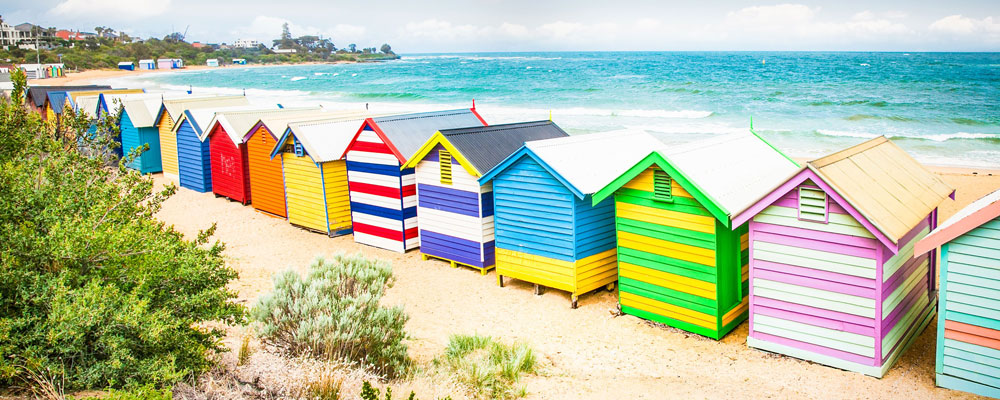
The Best Time to Visit South Australia (Adelaide)
Overall South Australia is Australia's driest state/ territory. The top two-thirds of the state is virtually all desert. Although all of the lower third of the state is also hot and dry, along the coast the weather can be cooler than in the north.
When is the best time to visit Adelaide? February-March is the best time of year to visit Adelaide
Why Adelaide between February and March? While February is one of the hottest months of the year in Australia on average, the latter parts of the month bridging into March tend to cool down to a seasonably warm level of comfort. Adelaide's geographical location works in its favour here.
While the first week of February still can boast days of surprisingly high temperatures in Adelaide, it still comes down to a reasonably comfortable average. Temperatures tend to settle around a 14°C (57 °F) minimum and 24°C (75 °F) maximum range without any of the humidity that plagues more northern cities.
Summer (December – February) During summer, average temperatures range from 16.7 - 28.6°C (62 - 83.5°F) and rainfall is sparse. Occasionally temperatures can soar to 40°C (104°F). Adelaide enjoys the lowest humidity of any Australian city.
Autumn (March-May) In autumn, the weather is pleasant with average temperatures between 12.7 - 22.7°C (55 - 73°F) and very little rainfall. The city and countryside take on a red, orange and golden hue.
Winter (June – August) In winter, average temperatures drop to between 8 - 16°C (46.5 - 60.8°F), and frosts are common in the nearby Adelaide Hills. June is the wettest month, averaging around 80 mm (3.1 ″ ), however, Adelaide is the driest of all the Australian capitals.
Spring (September – November) Spring sees weather warm up with average temperatures between 11.8 - 22°C (53.2 - 71.6°F). Rainfall is low but evenings can be quite brisk as temperatures drop quickly.
Self Drive Itineraries featuring South Australia

Since 2001 we’ve been helping visitors plan their dream Australian holiday. We aim to make visiting our beautiful land effortless. Let our expert holiday planners put together an itinerary for you, no obligation FREE of charge, or get some friendly advice on what small group tour would suit - Just follow the link and answer a few brief questions
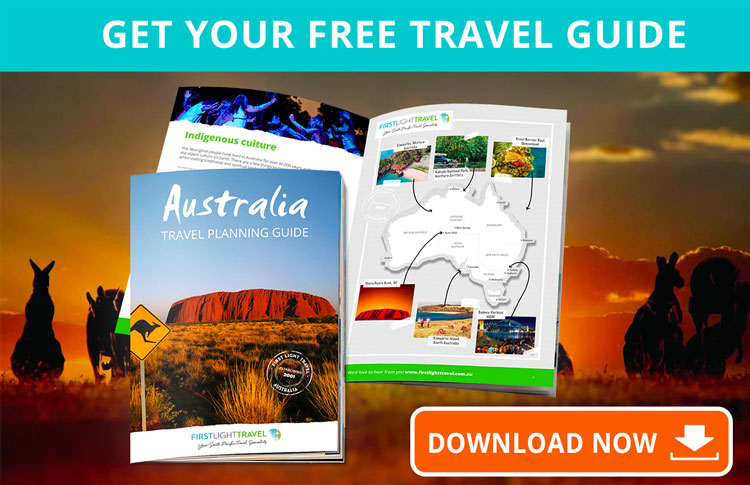
Pricing terms
The price is based on current exchange rates but is only an approximation. Please contact us for a final price
Sydney Travel Guide

Best Times To Visit Sydney
The best times to visit Sydney are September through November and from March to May. These months skirt Sydney's high and low seasons, offering visitors comfortable temperatures and manageable tourist crowds. Plus, airline prices fall during these shoulder seasons, making it more affordable to visit in the spring and fall. Thanks to Australia's location in the Southern Hemisphere, Sydney's warmest weather and peak tourist season falls between December and February (winter in the Northern Hemisphere). Consequently, the region's low season starts in May and lasts through August.
Weather in Sydney
Data sourced from the National Climatic Data Center
Find Flight and Hotel Deals
Navigate forward to interact with the calendar and select a date. Press the question mark key to get the keyboard shortcuts for changing dates.
Navigate backward to interact with the calendar and select a date. Press the question mark key to get the keyboard shortcuts for changing dates.
Popular Times to Visit Sydney
Tourism volume is estimated based on in-market destination search query interest from Google and on travel.usnews.com in 2015-2016. Hotel prices are sourced from a sample of U.S. News Best Hotels rates through 2015-2016.

Explore More of Sydney

Things To Do

Best Hotels

You might also like

# 11 in Best Places to Visit in Australia and The Pacific in 2023

# 16 in Best Places to Visit in Australia and The Pacific in 2023
If you make a purchase from our site, we may earn a commission. This does not affect the quality or independence of our editorial content.
Recommended
The 28 Best Water Parks in the U.S. for 2024
Holly Johnson|Timothy J. Forster May 8, 2024

The 18 Best Napa Valley Wineries to Visit in 2024
Lyn Mettler|Sharael Kolberg April 23, 2024

The 25 Best Beaches on the East Coast for 2024
Timothy J. Forster|Sharael Kolberg April 19, 2024

The 50 Best Hotels in the USA 2024
Christina Maggitas February 6, 2024

The 32 Most Famous Landmarks in the World
Gwen Pratesi|Timothy J. Forster February 1, 2024

9 Top All-Inclusive Resorts in Florida for 2024
Gwen Pratesi|Amanda Norcross January 5, 2024

24 Top All-Inclusive Resorts in the U.S. for 2024
Erin Evans January 4, 2024

26 Top Adults-Only All-Inclusive Resorts for 2024
Zach Watson December 28, 2023

Solo Vacations: The 36 Best Places to Travel Alone in 2024
Lyn Mettler|Erin Vasta December 22, 2023

26 Cheap Beach Vacations for Travelers on a Budget
Kyle McCarthy|Sharael Kolberg December 4, 2023

Travel EatRelax
Seasons in Australia
January 18, 2024 by Travel Eat Relax Leave a Comment
Australia’s seasonal tapestry weaves a story of diversity and contrast.
Unlike the uniform climates some travelers may anticipate, Australian weather cycles through an impressive spectrum.
Introduction to Australia’s Seasons
Each season has a distinctive chapter in the tale of this land.
Summer, from December to February, bathes the nation’s stunning beaches in a warm and sunny glow.
Melbourne seasons morph into a crisp, cooler ambiance, inviting patrons of the arts and café enthusiasts to relish the metropolitan charm.
Autumn, between March and May, paints the forests and parks in fiery hues, presenting a paradise for those with an eye for photography.
As I explore Sydney during this period, the city takes on a magical golden cloak, enchanting everyone with its natural beauty.
The Australian winter, spanning June to August, transforms the highlands into white wonderlands, welcoming those eager for winter sports amid the snow-clad Australian Alps.
Conversely, spring unspools from September to November, showering the region with vibrant wildflowers and enabling a glimpse of newborn Australian wildlife.
Travel planners mark this as the best time to visit Australia for the tapestry of color and life it offers.
From the tropical mirth of Queensland during its dry season to the verdant spring blossoms, each season in Australia narrates a unique pulse, an invitation to the world to witness this continent’s resplendent shifts.
Key Takeaways:
- Australia Seasons: The country offers a varied climate, with distinct experiences across different times of the year.
- Australia Tourism: Each season lends itself to specific activities, from summer beach visits to winter sports in the Alps.
- Travel to Australia: Planning travel according to the seasons is crucial for enjoying the country’s natural beauty, from autumn foliage to spring wildflowers.
Summer in Australia
Beaches become the heart of leisure, with Bondi and Byron Bay bustling with surfers and sunbathers alike.
I find this season perfect for indulging in Australia’s natural beauty; the coastline offers endless opportunities for relaxation and ocean adventures.
Whether it’s snorkeling in the clear waters of the Great Barrier Reef or simply enjoying a beachside barbecue, summer delivers the iconic Australian experience.
For adrenaline seekers, the summer months are ideal for surfing the world-famous waves or sailing across the sparkling seas.
The warmth extends beyond the sand as outdoor festivals and markets spring to life, showcasing local crafts and cuisine.
I revel in the long days, allowing ample time to explore coastal trails or join a beach volleyball match under the sun’s golden glow.
It’s no doubt that Australia’s summer season lays out the best of beach culture and activities, making it the most vibrant time to visit.
What Months are Summer?
In the vast expanse of Australia, summer unfurls its warmth from December to February.
During this season, the Top End, encompassing regions like Darwin, Kakadu, and Arnhem Land, experiences profound climatic dichotomy with its wet and dry seasons.
Those planning trips to this area must consider that the heavy rainfall and intense thunderstorms of the wet season bring lush green landscapes but may also limit access to certain areas due to flooding.
Travelers often find the dry season, spanning May to October, more conducive for exploration.
The skies clear up, and the humidity drops, unveiling the quintessence of Australia’s natural beauty.
This period is ideal for venturing into the untouched wilderness and engaging in outdoor activities without the interruption of monsoonal rains.
Whether you yearn for the symphony of storms or the tranquility of arid days, understanding these weather patterns is pivotal in planning your Australian adventure.
Be it for frolicking on sun-soaked beaches or for dipping into aboriginal cultures, aligning with Australia’s seasons can significantly enhance your travel experience.
Where to Go in Summer
The radiant sun blesses Australia’s landscapes during December to February, creating the perfect backdrop for summer activities.
The Whitsundays, a mesmerizing archipelago, beckons with its sapphire waters and immaculate beaches.
I recommend setting sail around this paradise, where the gentle ocean breeze and sprawling coral reefs provide a world-class aquatic playground.
Diving enthusiasts rejoice here seeing the abundant marine life up close.
Sydney, during these months, is not just about iconic landmarks; its beaches like Bondi and Manly burst with energy and sun-kissed crowds.
Melbourne, with its rooftop bars, pulsates with cultural festivals and open-air markets under the summer sky.
For those seeking a lush retreat, Tasmania’s cool climate offers respite with its verdant national parks and cooler beaches—a contrast to the mainland’s heat.
These diverse destinations showcase why the Australian summer stands as the best time to witness the country’s natural beauty and take part in its vibrant outdoor lifestyle.
Autumn in Australia
I notice a palette of orange, red, and gold sweeping across lush greenery, creating a tapestry of colors that beckon any avid photographer.
I watch as forests transform, with cooler days making way for the perfect backdrop of nature’s annual showcase.
I cherish the perspective shift from the bustling summer to the more tranquil autumn.
It’s a time when I find local parks are dusted with fallen leaves, vineyards in regions like Yarra Valley and Barossa brimming with ripe grapes, and cool, fresh air invigorates the soul.
These scenes represent the heart of Australia’s natural beauty—untouched, inviting, and rich with serenity.
Dusk brings early, coaxing travelers inside to relish heartwarming cuisine or perhaps a glass of bold red wine.
This season truly embodies what many consider the best time to visit Australia—a period when the environment comes alive with a spectacular array of sights and comfortable climate before the onset of winter.
What Months are Autumn?
I experience the Australian autumn from March through May.
In this period, particularly in the northern regions like Kakadu National Park, travelers must navigate the tail end of the wet season.
The remnants of this season present challenges such as heavy rainfall and tropical storms.
Road access is limited, and many areas are only reachable by 4WD or boat. Despite these obstacles, there’s a unique allure to visiting at this time.
The land is lush, waterways are brimming, and waterfalls cascade with a vigor only seen during these months.
I find that boat cruises along the swollen rivers offer me the chance to see an abundance of wildlife.
I observe the park thriving with activity, as this is a time for rejuvenation.
The wet conditions also lead to fewer crowds, giving me a sense of having this untouched natural beauty all to myself.
For those considering the best time to travel to Australia, it’s important to weigh these factors.
I recommend careful planning if you’re aiming to embrace the wet season’s challenges.
The rewards include vibrant landscapes and active wildlife, making autumn in Australia a captivating, albeit adventurous, time of year.
Where to Go in Autumn?
Australia basks in autumn’s resplendent canvas, each region painting a unique spectacle of colors and experiences.
As leaves shift from green to vivid ambers and golds, I find the Mornington Peninsula an enchanting destination. Vineyards brim with the harvest, and coastal walks offer crisp, refreshing air mixed with the scent of seasonal blooms.
Further south, Victoria’s renowned Yarra Valley becomes a magnet for oenophiles, bursting with the richness of the grape-picking season.
Wine tastings paired with artisanal cheeses under the shade of gold-tinted trees create moments you’ll reminisce for years.
I often recommend this region for its serene beauty and vibrant culinary scene.
But let’s not overlook Sydney, where the cool change in the weather makes exploring the city’s outdoor attractions, like the Royal Botanic Garden, a delightful experience.
The splash of jacaranda purple and the array of wildlife rouse the city from its summer slumber.
Whether you’re after natural beauty, culinary adventures, or cultural exploration, autumn in Australia offers a travel experience as rich and varied as the country’s landscape.
Winter in Australia
I find myself drawn to the Australian Alps where skiing, snowboarding, and tobogganing take center stage. The crisp mountain air and powdery slopes offer an experience markedly different from the country’s coastal reputation. June to August presents me with the chance to swap surf for snow as the temperature dips, particularly within the southern states of Victoria and New South Wales.
Snowfall doesn’t blanket all of Australia, yet it breathes life into winter wonderlands like Thredbo and Falls Creek. You can glide down the runs or simply embrace the serene, frosted environment that these ski resorts provide. Beyond the thrills of winter sports, I find joy in snuggling by a crackling fire or sipping hot chocolate amidst the stunning alpine scenery. If you’ve ever desired to witness kangaroos in the snow, this season presents unique opportunities to spot wildlife against a charming snowy backdrop.
For those who travel to Australia during these cooler months, remember that winter sports in Australia are an unexpected delight worth exploring. Packing a warm jacket and a sense of adventure, you’ll discover there’s more to Australian weather than sunny beaches and desert heat.
What Months are Winter?
Winter in Australia brushes the southern hemisphere from June to August. During these months, the Top End, including regions like Darwin and Kakadu National Park, ushers in the dry season. This time of year reveals a diverse Australian winter – one without the stereotypical snow, but with its own natural appeal. Clear blue skies prevail, creating perfect conditions for outdoor adventures without the hindrance of rain.
Comfortable temperatures accompany the dry season, making it ideal for exploring the raw and rugged landscapes. You can immerse yourself in the cultural richness of Kakadu National Park or witness the spectacular sunsets of the Northern Territory. Unlike the summer months, where humidity can dampen travel plans, the winter climate in this region is conducive to longer treks and more time spent in awe of Australia’s natural beauty.
For travelers seeking a blend of pleasant weather and wildlife encounters, the Australian winter in the Top End is the best time to visit. The lower humidity and moderate temperatures also ensure a more comfortable journey through Australia’s outback, unveiling an experience distinctly different from the bustling cities of Sydney or Melbourne. Australia’s seasons offer a kaleidoscope of climates and winter in the Top End is a chapter not to be overlooked.
Where to Go in Winter?
Australia seasons cast a unique spell on the work and holiday visa scene. I find winter a compelling time to explore job opportunities, particularly in regions where the snow falls. The Australian Alps beckon with roles in ski resorts, where hospitality and outdoor recreation jobs abound. I can imagine working amid snow-capped peaks, the thrill of winter sports a constant allure.
In cities like Sydney and Melbourne, winter tempts with cozy cafes and vibrant cultural events, offering a different spectrum of employment. I see it as a chance to engage in the hospitality sector, where bustling eateries and lodging services seek extra hands. The cooler climate invites tourists and locals alike to savor indoor experiences, igniting the job market with warmth.
- Melbourne seasons embrace winter with a flourish of arts and sporting events, presenting rich prospects for those inclined towards event management or the creative arts.
- Australia wildlife seasons offer unique roles, from conservation projects to tour guiding, especially in regions less affected by the cold.
- Australia tourism doesn’t hibernate; it simply shifts focus, sustaining a constant demand for workers across various sectors.
This cycle of seasons in Australia invites us to find harmony with the climate, optimizing our work and travel experience for an unforgettable stint down under. I’ve learned that catching the rhythm of Australian weather is key to capitalizing on the diversity of opportunities it presents.
Spring in Australia
I find myself enchanted by Australian springs. In this season, nature bursts forth in a symphony of color and life. Flowers bloom in myriad hues, covering landscapes in a canvas of vibrant beauty. I see jacarandas painting the urban stretches with their signature purple blossoms. I also witness wildflowers spreading like a kaleidoscopic carpet across the countryside, a scene that conjures images of botanical tapestries. It’s a painter’s dream palette come alive.
In the Australian weather calendar, spring marks a period when wildlife activities reach a crescendo. I observe with fascination as koala and kangaroo joeys peek from their mothers’ pouches. An air of vitality fills forests and plains, with creatures big and small playing their part in the cycle of life. Birdsong carries further in the mild air, and parks teem with visitors eager to bask in the gentle warmth. There is an undeniable pulse of growth and renewal, invigorating every visitor with a sense of rejuvenation.
It’s during these months that I recommend you travel to Australia. The climate is ideal, inviting outdoor explorations without the extreme heat or cold that other seasons might impose. From Sydney’s botanical gardens to Melbourne’s verdant surrounds, the natural beauty of Australia during spring is undoubtedly worth the trip. This is arguably the best time to visit Australia for those who cherish the natural world.
What Months are Spring?
Spring in Australia graces us from September to November. It’s a time when the country bursts into life after the cool bite of winter subsides. We see layers of frost replaced by a blanket of vibrant wildflowers, signaling a prime time for travelers drawn to nature’s colorful displays. Sydney parks teem with purple jacarandas while in Melbourne, expect garden expanses to be dotted with various blooms.
For those planning their travels, these months present a golden opportunity. The Australian climate is mild and conducive to exploring the great outdoors. Adventurers and sightseers alike find this period ideal to soak up Australia’s natural beauty without the peak of summer’s scorching heat. Wildlife, too, is particularly active, adding another layer of enchantment to the experience. Whether you want to witness kangaroo joeys taking their first hops or partake in Australia’s summer activities just as they kick off, spring allows for an array of experiences.
Choosing the best time to visit hinges on personal interests. Whether it’s the Melbourne Seasons bringing artistic temperance or the coastal allure for beach enthusiasts, aligning your journey with these months certainly enriches your travel to Australia. Comfortable temperatures provide leeway to traverse diverse terrains – from sun-kissed shores to hinterland trails. Keep in mind the diverse Australia Seasons to make the most of this country’s vast offerings.
Where to Go in Spring?
Planning a spring visit to Australia offers a unique chance to witness the country’s natural beauty at its peak. But to truly maximize the experience, I find it indispensable to seek advice from a travel agent who truly understands Australia’s diverse climate. These knowledgeable professionals can provide insights into the perfect locations for Australian spring flowers and wildlife seasons. These insights can prove to be the defining factor between a memorable trip and an exceptional one.
They will guide you through the myriad of activities suited to the temperate weather, from Melbourne’s vibrant cultural scene to the blooming floral displays in regional botanical gardens. A travel agent’s expertise ensures that you arrive at locations like Sydney during their most opportune seasons. They can hedge against the unpredictability of Australian weather, ensuring that your itinerary remains unspoiled by unforeseen weather changes.
With their help, you will discover hidden gems, from secluded beach coves to wildlife hotspots where you can observe Australia’s fauna as they revel in the spring bounty. They make it more likely for you to engage in Australia’s summer activities without the extremes of heat that come with the later months. Securing a seasoned travel agent is a step I never overlook when organizing my travels down under. This way, you can embrace the best time to visit Australia, enjoying each moment in harmony with the country’s mesmerizing seasonal rhythms.
Final Thoughts: Syncing With the Seasons
Syncing your travel plans with the varied tapestry of Australia’s seasons is a savvy move. Walk on sun-drenched beaches in summer, as Melbourne radiates with festivals, or witness Sydney’s rare winter crispness fostering cozy culinary pursuits. Every season turns the page to an undiscovered chapter of this grand adventure.
Let me guide you through choosing the best time to visit Australia. Consider the stellar snowfalls in the Australian Alps if winter sports beckon you. Picture Australia’s natural beauty, from the winter blooms in Tasmania to the spirited spring dancers of Australia’s wildflowers lining the Great Ocean Road. These seasonal moments can define a journey.
Remember, Australian weather doesn’t read from a single script. The tropical splendor of North Queensland’s seasons tells a different story to the southern charm of Adelaide’s winery-rich autumn. As I ponder the endlessness of this land’s offerings, I encourage you to plunge into its seasonal rhythms. Whether it’s the wet season’s drumming rain on Kakadu’s ancient escarpments or the triumphant burst of spring along the Mornington Peninsula, each offers a distinct embrace of Australia’s climate. This land is a grand stage, and the seasons are its players, each act promising an unforgettable scene. Align your travels with this knowledge, and you will thread your memories with the finest of Australia’s seasonal fabric.
Seasons in Australia FAQ
I understand you might have concerns about health and safety tied to the seasons in Australia. Let’s talk about those. During summer, beaches beckon with their golden sands and waves. But take heed, this is also when jellyfish, like the infamous bluebottle, are more prevalent. If stung, vinegar can be a good first aid measure. Yet, I’d also recommend checking with local lifeguards for on-the-spot advice.
Heat waves are another summer visitor, particularly in regions like Sydney and Melbourne. It’s best to keep hydrated, seek shade, and follow the Bureau of Meteorology for weather warnings. They provide updates on extreme conditions you might face.
Transitioning into autumn and spring, you may encounter erratic weather patterns. In places such as Tropical North Queensland, the climate can shift from clear skies to sudden downpours. When planning trips to Kakadu National Park during the wet season, pack for the possibility of heavy rain. It’s all part of the adventure, yet always put safety first and check park alerts.
Finally, if you’re venturing into the Australian Alps for some winter sports action, make sure to gear up properly against the cold. The mountains can be unforgiving, so equip yourself with the right attire and equipment. Websites like SnowSafe provide valuable information on alpine safety.
- Australia Seasons: Understanding the unique climate can help you stay safe.
- Australian Weather: Read forecasts and take precautions accordingly.
- Best Time to Visit Australia: Plan around your comfort and safety limitations.
- Australia Climate: Be aware of the dramatic variations across the country.
- Australia Tourism: Consult tourism websites for health and safety tips per season.
Remember, a little prep can go a long way in ensuring your time in Australia is memorable for all the right reasons. Pack smart, stay informed, and you should have a splendid time syncing with Australia’s seasons.
Reader Interactions
Leave a reply cancel reply.
Your email address will not be published. Required fields are marked *
Save my name, email, and website in this browser for the next time I comment.

Climate - Australia

The seasons
- Hot arid Outback - Port Hedland, Alice Springs, Oodnadatta
- Mediterranean south - Perth, Adelaide
- Tropical north - Darwin, Cairns
- Subtropical East Coast - Sunshine Coast, Brisbane, Sydney
- Oceanic southeast - Canberra, Melbourne, Tasmania
El Niño and La Niña
What to pack, hot arid outback.
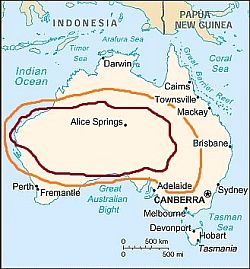
Alice Springs
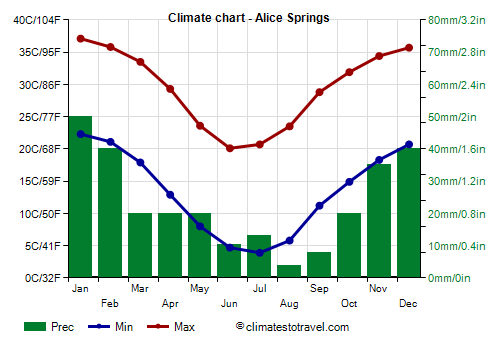
Mediterranean south
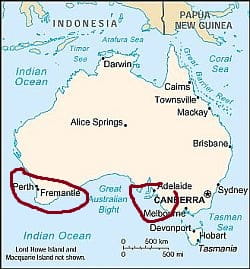
Tropical north
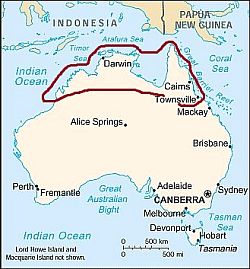
Subtropical East Coast
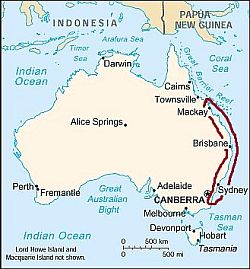
Oceanic southeast
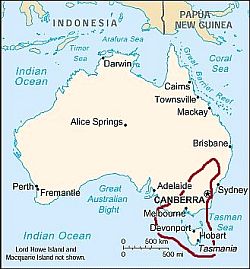
Australian Alps
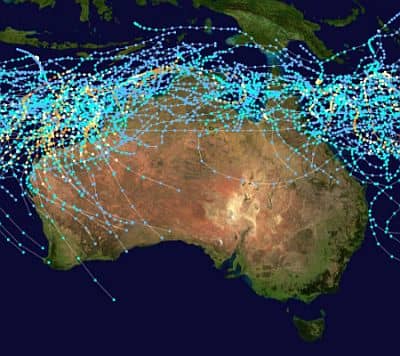

Airfare Pricing Tips to Australia & the South Pacific
Airfare Pricing to Australia and the South Pacific is significantly affected by the “ Dates ” you chose to travel. Typically there are three travel seasons: Basic, Shoulder and Peak. ‘Basic’ is the cheapest (low season) and typically has cooler climates with the lowest demand for travel. ‘Shoulder’ is in-between ‘Peak’ and ‘Low’. ‘Peak’ (high season) has the most demand for travel and is typically over the Christmas Holidays.
Airfare Pricing Seasonality
Basic Season (cheapest):
Example: The Standard Published Return Fare from Los Angeles to Sydney is approximately $2000 including tax.
Shoulder Season (in-between):
Example: The Standard Published Return Fare from Los Angeles to Sydney is approximately $2200 including tax.
Peak Season (most expensive):
Example: The Standard Published Return Fare from Los Angeles to Sydney is approximately $2700 including tax.
Seasonality Dates by Airline*
01 NOV THROUGH 30 NOV 01 FEB THROUGH 05 APR 01 MAY THROUGH 21 JUN 24 JUL THROUGH 17 SEP
Shoulder Season
01 DEC THROUGH 10 DEC 06 APR THROUGH 30 APR 18 SEP THROUGH 31 OCT 22 JUN THROUGH 23 JUL
Peak Season
11 DEC THROUGH 31 JAN
VIRGIN AUSTRALIA
06 APR THROUGH 30 APR 22 JUN THROUGH 23 JUL 18 SEP THROUGH 31 OCT 01 DEC THROUGH 10 DEC
AIR NEW ZEALAND
01 FEB THROUGH 05 APR 01 MAY THROUGH 21 JUN 24 JUL THROUGH 17 SEP 01 NOV THROUGH 30 NOV
11 – 31 DEC
* These dates & prices are set by the airlines and may change at any time without notice. Dates are USA Departure Dates. In some cases, it may be cheaper to travel on “Monday – Thursday” and more expensive on “Friday – Sunday”.
Special Airfares
Cheap airfares are often announced by the airlines to help increase flight loading during slow periods or to match fares offered by competitive airlines. These fares are typically announced at short notice (e.g. 1 day – 3 months prior to the required date of travel). We can help you “cash-in” on cheap airfares. If a special fare is currently not available for the dates you want to travel, then we can offer you a “Special Fare Monitoring Service”. Call us to find out how this service works, or you can simply Join our Mailing List and we’ll send you an email when a Special Fare is announced.
- Newsletter Signup
- Privacy Policy
- Terms of Service
- Australia Vacations
- Tailor-Made Vacations
- Escorted Tours
- Travel Agents
- Travel Insurance
- Travel Visa
- FAQs & Australia Travel Tips
- Travel Blog
- All Galleries
- Photographers
Awesome, you're subscribed!
Thanks for subscribing! Look out for your first newsletter in your inbox soon!
The best things in life are free.
Sign up for our email to enjoy your city without spending a thing (as well as some options when you’re feeling flush).
Déjà vu! We already have this email. Try another?
By entering your email address you agree to our Terms of Use and Privacy Policy and consent to receive emails from Time Out about news, events, offers and partner promotions.
- Things to Do
- Restaurants
- Arts & Culture
- Coca-Cola Foodmarks
- Los Angeles
Get us in your inbox
🙌 Awesome, you're subscribed!

Australia is officially the world’s fifth best tourism destination in 2024 – here’s what sets it apart
The World Economic Forum ranked Australia as one of the top five countries for tourism and travel in 2024

If Australia’s postcard-worthy beaches or poster-child kangaroos weren’t enough to tempt potential travellers, this news might just do the trick. The World Economic Forum (WEF) has just released its highly-anticipated biennial ranking of the best countries for tourism and travel in 2024 – and Australia has claimed one of the top five spots.
It appears that Australia is on an uphill streak, climbing from the seventh-best tourism destination in 2017 to sixth in 2021, and now claiming fifth place in 2024. The United States took the top spot in the WEF’s Travel and Tourism Development Index 2024 (TTDI) for the third year running, with six European countries and three Asia-Pacific regions rounding out the top ten. That includes Spain in second, Japan in third and France in fourth.
Curious about how WEF’s economists came to these conclusions? They ranked 119 economies around the world based on a set of 17 factors related to the development of tourism and travel in each country. These factors included the availability of tourist services and infrastructure, sustainability, natural resources, labour capacity and price competitiveness. Most of the data was sourced from reputable international organisations, like the World Health Organisation, UNESCO and UN Tourism, with the rest coming from the WEF’s annual Executive Opinion Survey .

Here are five reasons why Australia ranked so high in the latest TTDI:
Natural resources
We’re pretty stoked to see that Australia ranked as the second-best country in the world for its natural resources. From ancient rainforests and majestic deserts to blindingly beautiful coastal areas, our Great Southern Land has it all. A road trip along the East Coast or the West is the best way to experience it, for both locals and tourists alike.
Cultural resources
A culture-packed holiday is also on the cards for anyone looking to visit Australia, with our nation ranking 17th out of 119 countries for its cultural resources. Our country is home to the world’s oldest continuous culture, with the stories of Australia’s First Nation’s people beautifully woven into our vibrant arts and culture landscape. Whether you’re staying in the city or venturing into the outback, you’ll find countless opportunities to walk in their footsteps and learn about the rich history of our land.
Digital savviness
Australia shines in the digital realm, ranking 14th globally for its top-notch digital infrastructure and services. Kudos were given for our seamless adoption of digital payments, widespread 3G mobile network coverage, and easy digital booking systems for hotels , restaurants and leisure activities .
Ease of travelling to and from Australia
We love welcoming travellers from every corner of the globe, earning us a commendable 16th place ranking on the openness to tourism and travel scale. Our relatively relaxed visa requirements make it easy for visitors to come, stay and play, while the strength of the Australian passport, which ranks among the world’s most powerful , lets Aussies travel almost anywhere their heart desires.
Infrastructure for tourists
There are sparkly, new hotels popping up all around Australia , so it makes sense that our nation ranked at number 17 for our availability of tourist services and infrastructure. Our labour productivity in hotels and restaurants was also taken into consideration here, reflecting our 'work hard, play hard' reputation.
You can read more about why Australia is one of the best tourism destinations in the full report here or check out this snapshot of the top ten countries:
- The United States
- The United Kingdom
- Switzerland
Stay in the loop: sign up for our free Time Out Australia newsletter for more news, travel inspo and activity ideas, straight to your inbox.
RECOMMENDED:
Kudos to canberra australia's capital has been named the third smartest city in the world in 2024, just in: here’s how australia ranked on oxford economics’ inaugural global cities index, the gold coast overtakes sydney and melbourne as the top winter holiday spot for families.
- Melissa Woodley Travel & News Editor, Time Out Australia
Share the story
An email you’ll actually love
Discover Time Out original video
- Press office
- Investor relations
- Work for Time Out
- Editorial guidelines
- Privacy notice
- Do not sell my information
- Cookie policy
- Accessibility statement
- Terms of use
- Modern slavery statement
- Manage cookies
- Time Out Market
Time Out products

Australia Recommends 2024

Come and Say G'day

G'day, the short film

Discover your Australia

Travel videos

Deals and offers

Australian Capital Territory

New South Wales

Northern Territory

South Australia

Western Australia

External Territories

The Whitsundays

Mornington Peninsula

Port Douglas

Ningaloo Reef

Airlie Beach

Kangaroo Island

Rottnest Island

Hamilton Island

Lord Howe Island

Tiwi Islands

Phillip Island

Bruny Island

Margaret River

Barossa Valley

The Grampians

Hunter Valley

Yarra Valley

McLaren Vale

Glass House Mountains

Alice Springs

Uluru and Kata Tjuta

The Kimberley

Flinders Ranges

Kakadu National Park

Eyre Peninsula

Karijini National Park

Great Barrier Reef

Blue Mountains

Daintree Rainforest

Great Ocean Road

Purnululu National Park

Cradle Mountain-Lake St Clair National Park

Litchfield National Park

Aboriginal experiences

Arts and culture

Festivals and events

Food and drink

Adventure and sports

Walks and hikes

Road trips and drives

Beaches and islands

Nature and national parks

Eco-friendly travel

Health and wellness

Family travel

Family destinations

Family road trips

Backpacking

Work and holiday

Beginner's guide

Accessible travel

Planning tips

Trip planner

Australian budget guide

Itinerary planner

Find a travel agent

Find accommodation

Find transport

Visitor information centres
Deals and travel packages

Visa and entry requirements FAQ

Customs and biosecurity

Working Holiday Maker visas

Facts about Australia

Experiences that will make you feel like an Aussie

People and culture

Health and safety FAQ

Cities, states & territories

Iconic places and attractions

When is the best time to visit Australia?

Seasonal travel

Events and festivals

School holidays

Public holidays
How to get to Australia's most iconic cities

How long do I need for my trip to Australia?

How to travel around Australia

Guide to driving in Australia

How to hire a car or campervan

How to plan a family road trip

How to plan an outback road trip

Seasonal travel in Australia
Australia is famed for its sunny days and beautiful beaches, but each new season brings a magic of its own.
Link Copied!
The best ways to experience Australia’s seasons

Australia’s seasonal nature experiences

8 wildlife events to catch in summer

8 wildlife events to catch in autumn

8 wildlife events to catch in spring

8 wildlife events to catch in winter

Whale watching in Australia

When's the best time to visit?
Chasing an endless summer or keen to avoid the crowds find the best time to plan your trip to australia., seasonal essentials.

Weather in Australia

Australia’s seasons

Explore other interests

Aboriginal Australia

Road trips and self-drive journeys

Australia's food and drink experiences

Arts and culture of Australia
Australia's stunning seasons.
We use cookies on this site to enhance your user experience. Find out more . By clicking any link on this page you are giving your consent for us to set cookies.
Acknowledgement of Country

We acknowledge the Traditional Aboriginal and Torres Strait Islander Owners of the land, sea and waters of the Australian continent, and recognise their custodianship of culture and Country for over 60,000 years.
- International (English)
- New Zealand (English)
- Canada (English)
- United Kingdom (English)
- India (English)
- Malaysia (English)
- Singapore (English)
- Indonesia (Bahasa Indonesia)
- Deutschland (Deutsch)
- France (Français)
- Italia (Italiano)
- 中国大陆 (简体中文)
*Product Disclaimer: Tourism Australia is not the owner, operator, advertiser or promoter of the listed products and services. Information on listed products and services, including Covid-safe accreditations, are provided by the third-party operator on their website or as published on Australian Tourism Data Warehouse where applicable. Rates are indicative based on the minimum and maximum available prices of products and services. Please visit the operator’s website for further information. All prices quoted are in Australian dollars (AUD). Tourism Australia makes no representations whatsoever about any other websites which you may access through its websites such as australia.com. Some websites which are linked to the Tourism Australia website are independent from Tourism Australia and are not under the control of Tourism Australia. Tourism Australia does not endorse or accept any responsibility for the use of websites which are owned or operated by third parties and makes no representation or warranty in relation to the standard, class or fitness for purpose of any services, nor does it endorse or in any respect warrant any products or services by virtue of any information, material or content linked from or to this site.
- Travel Updates
Australian ski resort announce new opening date following large fire
A popular Australian ski resort has provided a revised announcement, just one day after announcing they’d close for the winter season.

Man dead after fall from largest cruise ship
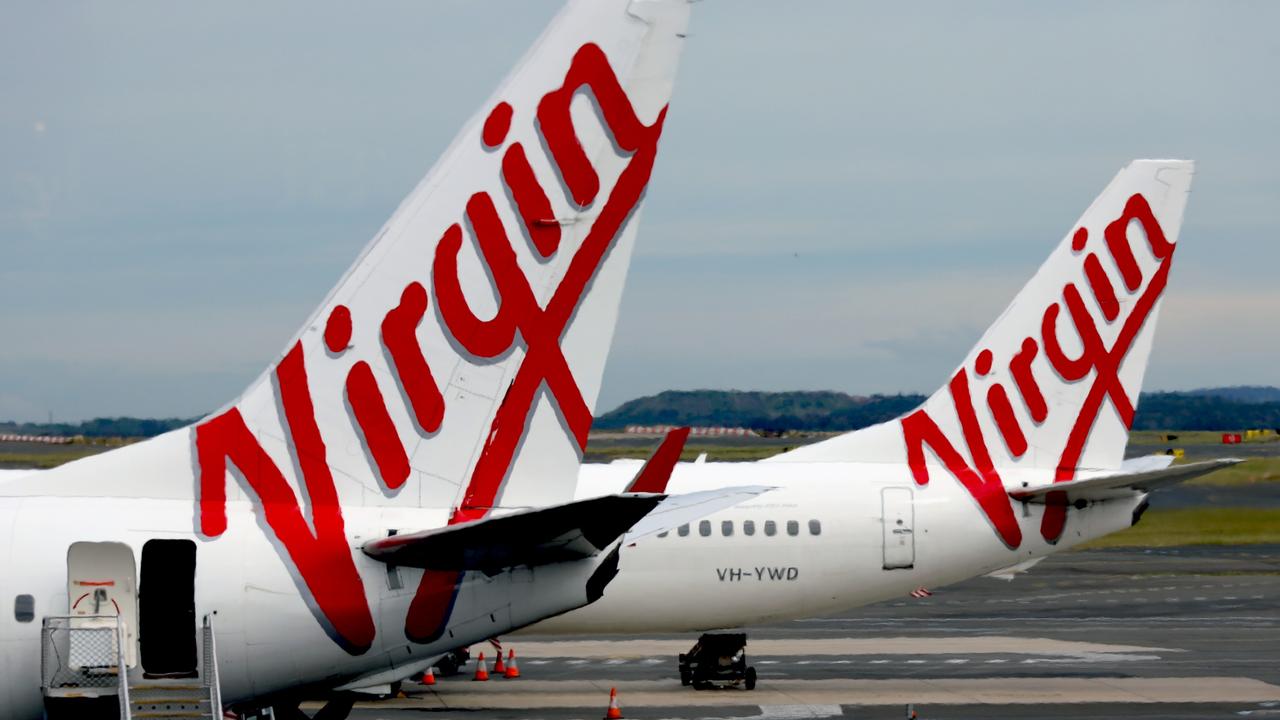
Naked man ‘goes bananas’ on Virgin flight
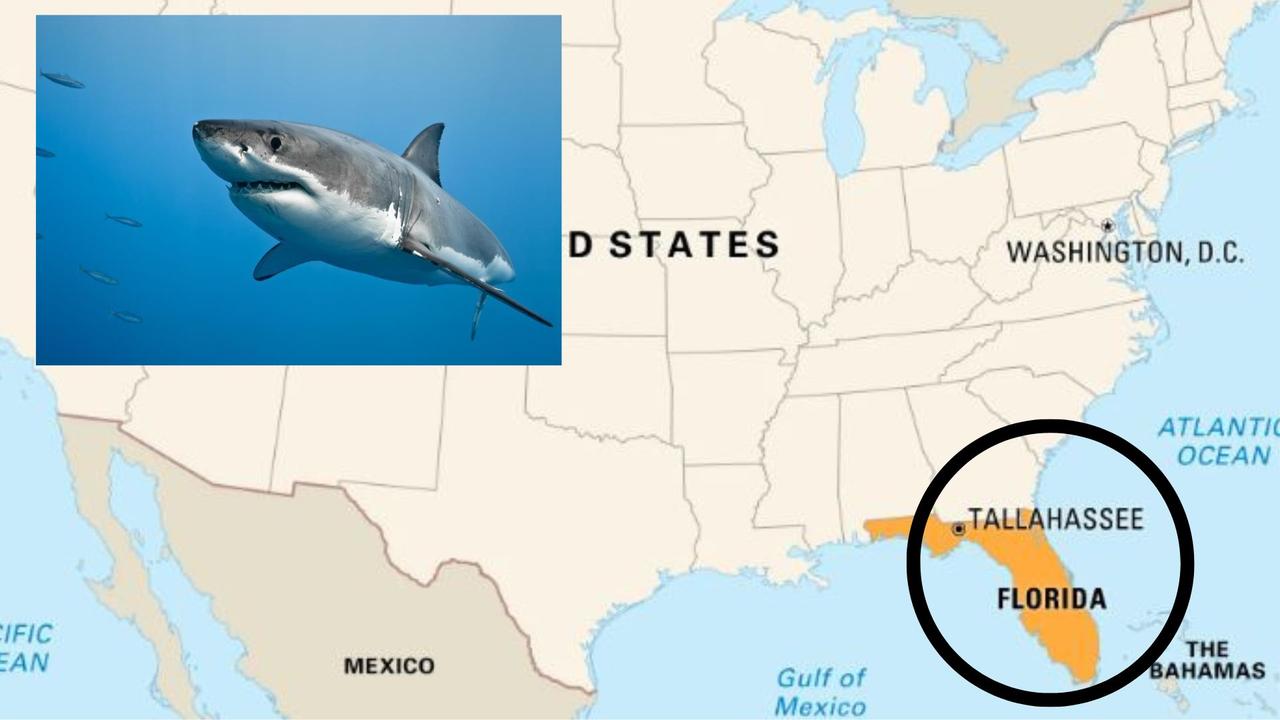
Chilling reason this state tops global list
Australia’s oldest and highest ski resort have backflipped on the announcement that they would likely close for the 2024 ski season following a fire at the property.
The blaze broke out at Charlotte Pass Snow Resort’s sewerage treatment plant near Mount Kosciuszko’s peak on Friday, May 17.
With the plant still unable to process any wastewater from taps, showers or toilets, the resort announced days after the incident that they were struggling to find a solution to be able to open for the start of winter.
Kevin Blyton, chairman of the resort, said they were looking into whether temporary services could be restored to sections of the plant not impacted by the fire, whether they could use a temporary package sewerage treatment plant, or if sewerage could be trucked off-site and processed elsewhere.
“I must caution that all of these potential options present significant challenges and may not be operationally feasible in the unique alpine region Charlotte Pass is located in, as well as the short time frame before the commencement of the 2024 season,” Mr Blyton said on Wednesday.
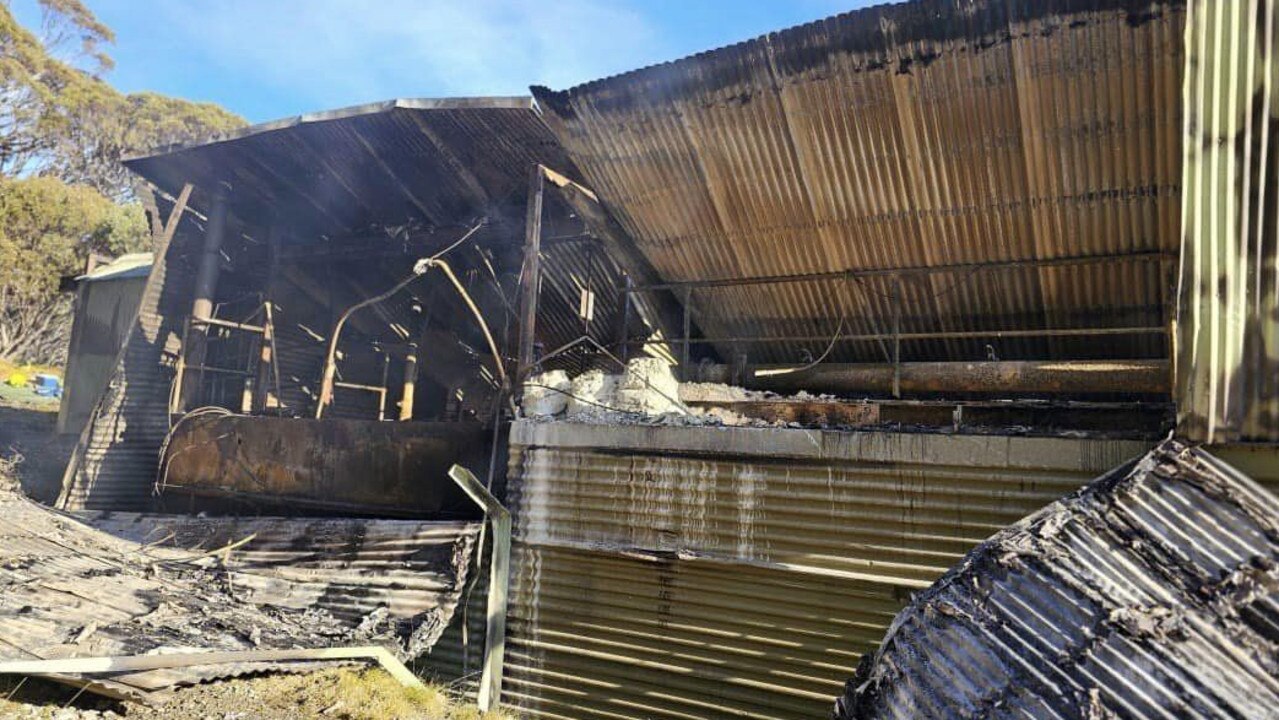
On Friday evening, however, a week since the fire broke out about 6.30am — the resort announced they had sourced a “temporary option” to now allow the season to proceed from Friday 5th July — just in time for the school holidays.
“Just in time for the school holidays,” the statement read.
“Lifts are scheduled to start spinning on Friday 5th July. Guests arrival for all overnight accommodation will also commence from Friday 5th July.”
The resort announced the only “viable option” was to restore temporary services to the existing Sewage Treatment Plant.
During the fire, four trucks and 16 firefighters responded to the blaze, establishing a relay to pump water to the isolated location.
Fire and Rescue NSW Inspector Phil Eberle said the first truck arrived within 15 minutes, before the others joined shortly after.
He said it took them about two hours to bring it under full control.
“They’ve done a great job here. We’ve got very little to no exposure [of hazardous materials] into the environment,” he said at the scene.
“Unfortunately, it’s caused a lot of damage to Charlotte Pass but the firefighters and fire rescue have just done a great job.”
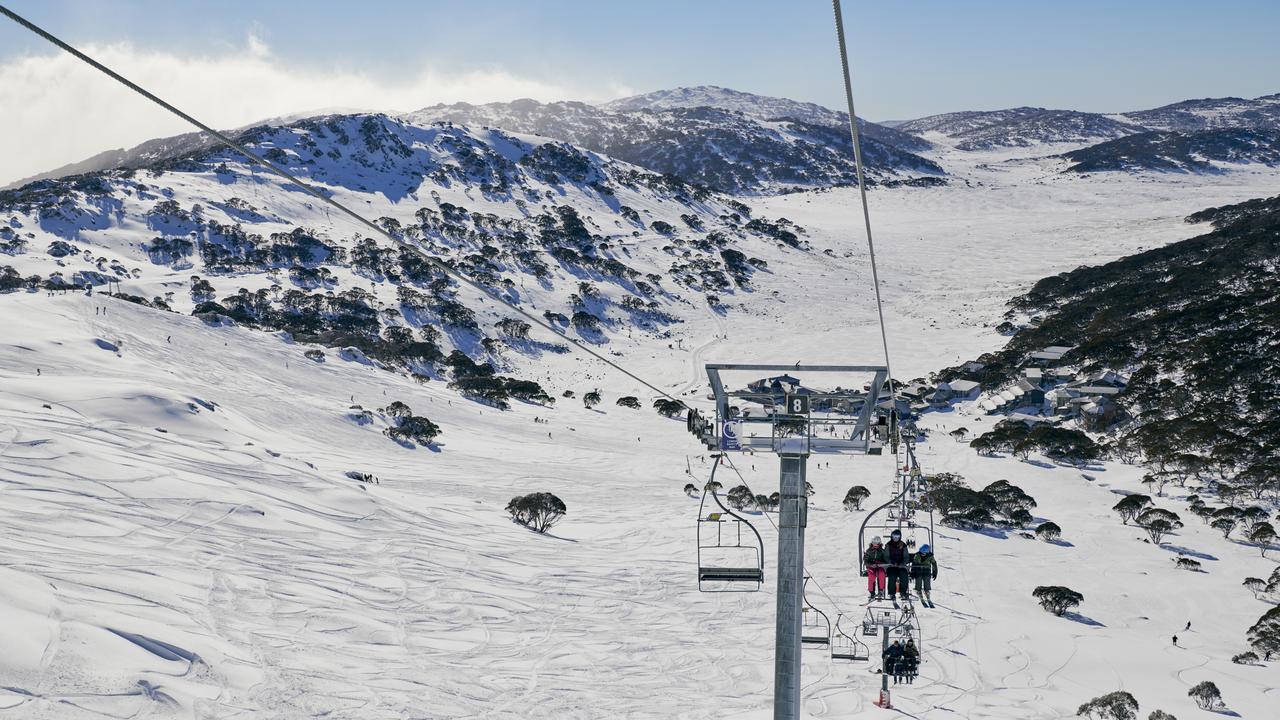
Charlotte Pass, owned by the Blyton Group, is only accessible in the snow season by the resort’s oversnow transport service from Perisher Valley.
More Coverage

In 2022, Charlotte Pass was fined $144,000 and ordered to pay NSW Environment Protection Authority’s investigation costs of more than $90,000 after Spencers Creek in Kosciuszko National Park was polluted.
Over a period of 78 days in 2019, partially treated effluent from the resort’s sewage treatment plant discharged into Spencers Creek.
The EPA said Charlotte Pass was in breach of its environment protection licence for failing to “maintain and operate its sewerage treatment plant in a proper and efficient manner”.
Add your comment to this story
To join the conversation, please log in. Don't have an account? Register
Join the conversation, you are commenting as Logout
A passenger has died after he fell from the world's largest cruise liner on the first day of his voyage.
A naked man reportedly ran down the aisle of a Virgin flight from Perth, knocking over a crew member and causing the plane to turn around.
A global list has identified a part of the world where you may want to think twice before putting on your swimsuit and taking a dip.
Are you lost? See if these links help.
Other popular searches
Social Channels
- Tottenham Hotspur on Facebook
- Tottenham Hotspur on X (formally Twitter)
- Tottenham Hotspur on Instagram
- Tottenham Hotspur on YouTube
- Tottenham Hotspur on Tiktok
- Tottenham Hotspur on Threads
- Tottenham Hotspur on WhatsApp
- Tottenham Hotspur on Snapchat
- Tottenham Hotspur on Naver
- Tottenham Hotspur on Weibo
- Tottenham Hotspur on Bilibili
- Find Tottenham Hotspur on WeChat
Sites & Languages

#ClubAnnouncement #Men'sFirstTeam #Newcastle
Squad for Australia trip confirmed
The travelling squad for this week’s visit to Melbourne, Australia, for our post-season friendly against Newcastle United has been confirmed.
The 24 players making the trip are as follows...
George Abbott Brandon Austin Rodrigo Bentancur Leo Black Alfie Devine Jamie Donley Radu Dragusin Bryan Gil Tyrese Hall Brennan Johnson Dejan Kulusevski Rio Kyerematen Emerson Royal James Maddison Ashley Phillips Pedro Porro Yago Santiago Pape Matar Sarr Dane Scarlett Oliver Skipp Heung-Min Son Micky van de Ven Guglielmo Vicario Alfie Whiteman
The trip sees Under-21s midfielder Rio Kyerematen and Under-18s midfielder Leo Black travel with the first team for the first time.
We’re set to take on Premier League rivals Newcastle at the iconic Melbourne Cricket Ground (MCG) on Wednesday (22 May), kick-off 7.45pm local time in Australia (10.45am UK).
The fixture marks a return to his home city for Ange Postecoglou, who memorably took charge of the team for the first time on home soil when we faced West Ham United in Perth last summer.
It represents our first return to the world-famous MCG since July, 2016, when we faced Juventus and Atletico Madrid in pre-season action.

Stay up to date

Australia/New Zealand Ski Resorts 2024 Opening Dates
A s the North American ski season winds down, the Southern Hemisphere's ski season is just gearing up. Hence, we have compiled a list of the opening dates for some of the biggest ski resorts in Australia and New Zealand, for those looking for their endless winters.
One of those Australian resorts is Perisher, and officials at the resort recently posted a video of their snowmaking efforts. See below.
Perisher, located in Kosciuszko National Park, and Australia's largest ski resort, is scheduled to open on June 8th with a projected closing date of October 7th, for the 2024 winter season. Perisher is on the Australian Epic Pass.
Thredbo, located in New South Wales, is also scheduled to open June 8th , and they are hosting a variety of opening weekend festivities including the debut of the Alpine Coaster, live music, face painting, an ice sculptor, and the Blessing of the Snow.
The Blessing of the Snow is a long-held tradition where Thredbo Ski Patrol, local church leaders and the the community gather in the Thredbo Chapel to wish everyone a safe, happy and prosperous season.
Falls Creek, Victoria's largest alpine resort , is opening June 8th this year. Falls Creek is also on the Australian Epic Pass. It's a family-oriented resort with lake views and 27 bars and restaurants for a variety of options to choose from après ski.
Falls Creek announced "less than three weeks" until their opening with a video of snowmaking posted to Instagram. Watch below.
Mt. Buller, just a three-hour drive from Melbourne, is also opening June 8th, and their King's Birthday Weekend has a full lineup of fun events. The long weekend includes activities such as face painting, s'mores making, live music, and fireworks... and skiing, of course!
Mount Hotham, in the Victorian Alps of the Great Dividing Range in Victoria, is scheduled to open June 8th, as well. Their projected closing date is October 6th.
In New Zealand, Whakapapa – Mt. Ruapehu is scheduled to open on July 6th , with a projected closing date of October 13th. Happy Valley opens June 22nd, with a projected closing date of September 29th.
Mt. Ruapehu was recently the location of financial news, as the resort was looking for a buyer earlier this year. Read below.
Related: Struggling New Zealand Ski Resort Almost Purchased, Future Uncertain
Cardrona, in the Cardrona Valley on New Zealand’s South Island, is tentatively set to open on June 15th . The ski area was founded in 1980 and sometimes offers half day passes, depending on the resort's capacity.
Mount Hutt, to the west of the Canterbury Plains in the South Island of New Zealand, is scheduled to open on June 14th. Weekend first tracks begin on July 6th.
Coronet Peak , in Queenstown, is scheduled to open on June 15th, with first tracks beginning on July 1st.
Tūroa Ski Field – Mt. Ruapehu , a wide-open feeling resort located on New Zealand's North Island, boasts the highest point and largest vertical descent in New Zealand. The ski area is set to open July 6th.
There are a lot of options as winter begins on the opposite side of the globe from us here in America. Those of us who won't be traveling will surely be watching as clips start rolling in.
Related: 'Crack Yeetin' With Scott Gaffney- Palisades Tahoe Spring '24 Q&A
Don't miss another headline from POWDER! Subscribe to our newsletter and stay connected with the latest happenings in the world of skiing.
We're always on the lookout for amusing, interesting and engaging ski-related videos to feature on our channels. Whether you're a professional or just an amateur, we want to see your best footage and help you share it with the world. Submit your video for a chance to be featured on POWDER and our social channels. Be sure to subscribe to our YouTube channel to watch high-quality ski videos.

Newcastle United and Tottenham Hotspur Premier League post-season Australia trip slammed by Alan Shearer
Sport Newcastle United and Tottenham Hotspur Premier League post-season Australia trip slammed by Alan Shearer
Newcastle United's post-season trip to Australia has been described as "madness" and "crazy" by club legend Alan Shearer, the former England captain.
The Magpies headed for the airport as soon as they finished their English Premier League campaign on Sunday at Brentford's West London stadium, conveniently less than 10 miles from Heathrow Airport.
If that was a short trip, the journey that followed was anything but: a near-24 hour flight to Melbourne where Newcastle will face Tottenham at the MCG on Wednesday .
That is followed by Friday's match at Docklands against an A-League All Star side.
Many of the players involved will have to report for international duty not long after they return home and Shearer said on the BBC's Match of the Day highlights programme: "Can you imagine if you're a player who is playing in either the Copa America or Euro 2024 having to do that? Madness. Crazy."
The Premier League's all-time record goalscorer, who later managed hometown club Newcastle, added: "I wouldn't be happy at all.
"It's crazy for Newcastle to go and play Spurs there on Wednesday night and then another game."
Newcastle defender Kieran Trippier, who is expected to be in England's Euros squad, had already questioned the timing of the trip.
"It's not ideal because it's a tournament year," he said.
"I understand why the club are doing it. I've done it at Tottenham and [Atletico] Madrid but from my own experience of it, in a tournament year it's not ideal."
Newcastle manager Eddie Howe has said he will rotate players and use all the 29-man travelling party — which includes Australia's Garang Kuol — across the two games.
A number of notable players were not travelling, mainly because of injury.
Recently capped England international Anthony Gordon missed out for that reason along with Fabien Schär, Sven Botman, Sean Longstaff, Joe Willock and Jamaal Lascelles.
Italy's Sandro Tonali did not make the trip as he is serving a 10-month ban for betting on matches while goalkeepers Martin Dúbravka and Loris Karius are set for moves away from the club.
As a result, many little-known youngsters will get playing time alongside international stars such as Trippier, Bruno Guimarães and Alexander Isak.
"It is difficult if you are just going on holiday, let alone playing so soon after landing. That will be the trickiest thing for us," said coach Eddie Howe.
Tottenham have been more relaxed about their trip, in part due to having an Australian coach in Ange Postecoglou, who will be returning home to Melbourne, but mainly due to having had a less-demanding season.
"Our situation is a bit different from Newcastle's. They've had a European season, Champions League, it's been a big season. We haven't," Postecoglou said.
"I certainly wouldn't have allowed it to happen if we were in Europe this year and had a bigger game schedule. I probably would have said no to it.
"And I don't think the club would have expected us to go. If we're in Europe next year, I don't think you'll be seeing this happen.
"I don't think it's ideal. But I think each situation is unique. For us, on the back of our season, to play one more game two days after the end of the season, there is substance to it for us."
Spurs are also missing players through injury, notably Richarlison, Destiny Udogie, Cristian Romero and Pierre-Emile Højbjerg, plus Timo Werner who is getting married.
But skipper Son Heung-min will nevertheless lead a strong party that features all but Argentine World Cup winner Romero of the 11 starters in Sunday's 3-0 win at Sheffield United.
The match follows a report last year from player's union FIFPRO (Fédération Internationale des Associations de Footballeurs Professionnels) that said the game was facing "dangerous levels of fixture congestion" and that more needed to be done to protect players.
Last month, the Football Association provoked the ire of the lower reaches of the football pyramid by scrapping replays in its flagship tournament, the FA Cup, to allay fears predominantly from teams that play in European competition — although such measures appear somewhat moot when those clubs then arrange overseas tours.
"The reforms of the two major tournaments will ultimately increase the number of games played by top players who could conceivably feature in both," the Fifpro said.
"This poses a threat to the wellbeing of players who are already pushed to their limit with the current international match calendar."
The ABC of SPORT
- X (formerly Twitter)
Related Stories
Manchester city wins 'incredible' fourth-successive premier league title.
Matildas stars and Ange Postecoglou bringing their London clubs back to Australia for A-League showdown in May
'A memory for a lifetime': Jürgen Klopp leaves a football legacy far greater than silverware
Spurs fans wanted to lose to Manchester City, and Ange was furious about it
'They couldn't stop him': Mariners teen lights it up in clash with European giants
- A-League Men
- Australia Soccer
- England Soccer
- English Premier League
- Live on Sky
- Get Sky Sports
- Sky Mobile Apps
- Kick It Out
- Black Lives Matter
- British South Asians in Football
Premier League pre-season friendlies, fixtures, results 2024: Summer tours, training in USA, Asia, Australia and more
Arsenal, Liverpool, Manchester United face each other in USA this summer; Chelsea play Wrexham and Real Madrid in California; see all English top-flight clubs' confirmed pre-season dates; Premier League 2024/25 season starts on weekend of August 17/18
Monday 27 May 2024 20:33, UK

Premier League clubs are already making plans for the 2024/25 season by arranging pre-season friendlies across the globe.
Arsenal, Manchester United and Liverpool will renew rivalries in the USA this summer, while Tottenham face Bayern Munich twice in the space of a week.
Keep track below of all the friendly fixtures and results. This page will be updated as more clubs announce pre-season dates and confirm kick-off times.
- Premier League 2024/25: Schedule, dates and fixture release day
- Transfer Centre LIVE!
- Summer 2024 transfer window dates and Deadline Day
- Live football on Sky Sports
Which Premier League sides are going to the USA in summer 2024?
Several Premier League heavyweights are heading to the States.
Arsenal will play Manchester United and Liverpool in Los Angeles and Philadelphia respectively in July, while Chelsea will take on Manchester City in Columbus and have also lined up friendlies against Wrexham and Real Madrid.
- Transfer Centre LIVE! 'Everton set for player fire sale or risk administration'
- Papers: Leicester at risk of record points deduction
- Man Utd rumours: Man Utd in pole for cut-price £40m Branthwaite
- Bellingham named LaLiga player of the season
- Why Chelsea are willing to take risk on untested Maresca
- Southgate stays committed to England amid Man Utd review
- Spurs secure Werner on new loan deal from RB Leipzig
- Style and substance? Kompany to Bayern raises questions
- Leeds chairman Q&A: Farke future, Archie Gray & transfer plans
- Do Hamilton and Mercedes still see eye to eye?
- Latest News

Aston Villa, Crystal Palace, Wolves and West Ham are also heading to the US for warm-up games.
Premier League pre-season friendlies - confirmed dates so far
July 27: Arsenal vs Man Utd - SoFi Stadium, Los Angeles (kick-off 1am July 28 UK time) July 31: Arsenal vs Liverpool - Lincoln Financial Field, Philadelphia, kick-off 7pm local time (12.30am August 1 UK time)
Stream Sky Sports on NOW
Get Sky Sports on WhatsApp!
Live football on Sky Sports this week
Aston Villa
July 17: Aston Villa vs Walsall - Bescot Stadium, kick-off 7.30pm July 27: Aston Villa vs Columbus Crew - Lower.com Field, Ohio, kick-off 8pm local time (1am July 28 UK time) July 31: Aston Villa vs RB Leipzig - Red Bull Arena, New Jersey, kick-off 8pm local time (1am August 1 UK time) August 3: Aston Villa vs Club America - Soldier Field, Chicago, kick-off 4.30pm local time (10.30pm UK time) August 10: Aston Villa vs Borussia Dortmund - Signal Iduna Park, Dortmund, kick-off 4pm UK time
August 3 : Brentford vs Watford - Vicarage Road, kick-off 3pm August 9 : Brentford vs Wolfsburg - Gtech Community Stadium, kick-off 7.45pm
July 24: Kashima Antlers vs Brighton - National Stadium, Tokyo, kick-off 11am UK time July 28: Tokyo Verdy vs Brighton - National Stadium, Tokyo, kick-off 10.30am UK time August 3: QPR vs Brighton - Loftus Road, kick-off 3pm
July 24: Chelsea vs Wrexham - Levi's Stadium, Santa Clara July 27: Chelsea vs Celtic - Notre Dame Stadium, Indiana July 31: Chelsea vs Club America - Mercedes-Benz Stadium, Atlanta August 3: Chelsea vs Man City - Ohio Stadium, Columbus August 6: Chelsea vs Real Madrid - Bank of America Stadium, Charlotte
Crystal Palace
July 31: Crystal Palace vs Wolves - Navy-Marine Corps Memorial Stadium, Maryland, kick-off 8pm local time (1am August 1 UK time) August 3: Crystal Palace vs West Ham - Raymond James Stadium, Florida, kick-off 7pm local time (12am August 4 UK time)
August 10: Hoffenheim vs Fulham - PreZero Arena, Germany, kick-off 4pm UK time
July 27: Ipswich vs Fortuna Dusseldorf - Portman Road, 3pm
July 27: Liverpool vs Real Betis - Acrisure Stadium, Pittsburgh, kick-off 12.30am UK time July 31: Liverpool vs Arsenal - Lincoln Financial Field, Philadelphia, kick-off 7pm local time (12.30am August 1 UK time) August 3: Liverpool vs Man Utd - Brice Stadium, South Carolina, kick-off 12.30am August 4 UK time
July 23: Man City vs Celtic - Kenan Stadium, Chapel Hill, N.C. July 27: Man City vs AC Milan - Yankee Stadium, New York July 30: Man City vs Barcelona - Camping World Stadium, Orlando August 3: Man City vs Chelsea - Ohio Stadium, Columbus
July 15: Man Utd vs Rosenborg - Lerkendal Stadion, Trondheim, kick-off 5pm UK time July 20: Man Utd vs Rangers - Scottish Gas Murrayfield, Edinburgh - kick-off 4pm July 27: Man Utd vs Arsenal - SoFi Stadium, Los Angeles, kick-off 1am July 28 UK time July 31: Man Utd vs Real Betis - Snapdragon Stadium, San Diego, kick-off 5am August 1 UK time August 3 : Man Utd vs Liverpool - Brice Stadium, South Carolina, kick-off 12.30am August 4 UK time
May 22: Newcastle 1-1 Tottenham (Newcastle won 5-4 on penalties) - MCG, Melbourne May 24: A-League All Stars 8-0 Newcastle - MCG, Melbourne July 31: Newcastle vs Urawa Red Diamonds - Saitama Stadium, Saitama, kick-off 7.30pm local time (11.30am UK time) August 3: Newcastle vs Yokohama F. Marinos - National Stadium, Tokyo, kick-off 7pm local time (1pm UK time)
May 22: Newcastle 1-1 Tottenham (Newcastle won 5-4 on penalties) - MCG, Melbourne July 20: QPR vs Tottenham - Loftus Road, kick-off 3pm July 27: Tottenham vs Vissel Kobe - National Stadium, Tokyo August 3: Tottenham vs Bayern Munich - Seoul World Cup Stadium, South Korea August 10: Tottenham vs Bayern Munich - Tottenham Hotspur Stadium, kick-off 5.30pm
July 27: West Ham vs Wolves - EverBank Stadium, Florida, kick-off 7pm local time (12am July 28 UK time) August 3: West Ham vs Crystal Palace - Raymond James Stadium, Florida, kick-off 7pm local time (12am August 4 UK time)
July 27: Wolves vs West Ham - EverBank Stadium, Florida, kick-off 7pm local time (12am July 28 UK time) July 31: Wolves vs Crystal Palace - Navy-Marine Corps Memorial Stadium, Maryland, kick-off 8pm local time (1am August 1 UK time)
When does the 2024/25 Premier League season start?
The 2024/25 Premier League season will start on the weekend on August 17/18 .
When are the 2024/25 Premier League fixtures released?
The Premier League fixtures - all 380 of them - will be released at 9am on Tuesday June 18 .
Last year, Sky Sports confirmed its opening weekend picks for live coverage at the same time.
Dates and kick-off times for all Premier League fixtures are subject to change.

Correctly predict six scorelines for a chance to win £250,000 for free. Entries by 3pm Saturday.
Live Premier League on Sky Sports in 2024/25
Sky Sports will show 128 games exclusively live in the 2024/25 season - and a brand new agreement between Sky Sports and the Premier League means even more live matches from 2025/26.
From 2025, Sky Sports will broadcast a record minimum of 215 Premier League matches a season after finalising a new four-year agreement.
Throughout the 2024/25 season, you can watch Premier League match highlights for free - without being a Sky Sports subscriber.
You'll find highlights from every Premier League game in the Score Centre, as well as on the Sky Sports website and Sky Sports app shortly after full-time , or from 5.15pm for midday Saturday kick-offs. You can also watch them on the Sky Sports Football YouTube channel.
You can stream Sky Sports live with no contract on a Month or Day membership on NOW - find out more about instant access to live action from the Premier League, EFL, F1, England cricket and much more.
Sky Sports+ - more sport, launching in August!
Sky Sports+ will give more choice to sports fans via live streams and a new dedicated channel, at no extra cost.
Launching this August, Sky Sports+ will be transformational in the amount of choice sports fans will have access to via live streams on Sky TV , streaming service NOW and the improved Sky Sports App on mobile.
With more coverage than ever before from the EFL, both tennis Tours and men's Super League, Sky Sports customers can enjoy more than 50% more live sport this year.

How to watch Premier League, EFL play-offs, WSL, Scottish Premiership, F1 and more
- Stream with NOW

- Upgrade Now

IMAGES
COMMENTS
December to February is the best time for beach days and festival vibes. Thoughts of Australia often conjure summer scenes of clear skies, brilliant sunshine and the sparkling ocean. December to February brings the hottest months with the longest days. This is also the peak travel season, so come prepared for crowds and premium rates on ...
Spring and autumn are among the best times to travel the entire country. International flights to Australia are more affordable than in summer; the weather is warming up (or cooling down from summer highs); and the north, from Broome to Cairns, experiences the dry season, offering perfect travel conditions. Must do spring experiences.
Seasonal travel in Australia. Australia is famed for its sunny days and beautiful beaches, but each new season brings a magic of its own. Link Copied! The best ways to experience Australia's seasons Australia's seasonal nature experiences. 8 wildlife events to catch in summer. 8 wildlife events to catch in autumn.
Given the size of the country, the climate in Australia varies greatly from one region to the next. Generally speaking, there are four seasons across most of the country while the Top End (including Darwin, Katherine, Kakadu and Arnhem Land), Broome, the Kimberley and Tropical North Queensland (Cairns, the Whitsundays and the Daintree Rainforest) experience a 'wet season' (November to ...
Best Times to Visit Australia for Smaller Crowds. Most tourists, especially from the Northern Hemisphere, visit Australia during the country's summer months: December, January, and February. To ...
The Basics. To break things down for you, each of Australia's seasons comprise of three full months per season. Each season begins on the first day of the calendar month, so summer in Australia is from December 1 to the end of February, autumn from March to May, winter from June to August, and spring from September to November.
Australia's coldest month can still be a good time to travel with daytime temperatures rarely below 50 F and nighttime lows of around 40 degrees F. In fact, winter is the peak season in the outback and the tropical north.
Far North Australia has a Wet Season and Dry Season, so make sure you plan around these. Shoulder seasons (spring and autumn/fall) are great times to plan a multi-state trip and avoid extremes of temperature. Whichever time of year you travel, you'll have a great time! Further Reading: Our In-Depth Seasonal Guides. Don't forget to check out our ...
5. The Best Time to Travel to Australia. For me, the best time to go to Australia is either Spring (September - November) or Autumn (March - May), not too hot nor too cold. This avoids the busy Summer Break (School Holidays) and the peak Christmas traffic (most expensive flight prices). If traveling up north to the tropics and with no other ...
High season is from about Christmas through the end of January, when children are on their summer holidays, and the popular resorts fill up with the locals. In the north, June through August is peak season as Australians from the southern areas travel north to escape winter. Typically the airlines will discount airfares April through June.
High Season - The peak travel season in the most popular parts of Australia is the Aussie winter. In much of the country — particularly the northern half — the most pleasant time to travel is April through September, when daytime temperatures are 66[dg]F to 88[dg]F (19[dg]C - 31[dg]C) and it rarely rains.
March-May is another great shoulder season travel time with temperatures dropping in 15 degrees Celcius (60 Fahrenheit) South Australia has a large portion of the outback in its borders and travel in shoulder season is much more pleasant than the hot summers. Victoria. Melbourne possibly has the most changeable weather in Australia.
Here are Australia's seasons by month: Spring: September - November. Summer: December - February. Autumn: March - May. Winter: June - August. The best seasons to travel to Australia (nicest weather) are in either Spring or Autumn.
Travel season is the peak season, with six weeks of school holidays. It is the busiest time and most expensive to travel around Australia for locals and international travellers alike. So if you do not like crowds or want to save money, avoid going to Australia in Summer from December to February.
March, April, and May. Fall might just be the best time of year to go to Australia: Most of the famous sights are less busy, prices for accommodations are lower, and the weather is still very good. Depending on where you go, taking an Australia tour during the Northern Hemisphere's spring can also mean hot days and blue skies.
Low Season for Tourists. October to March is the low season for Tourists. Low season in Australia is less crowded, but it's can be an uncomfortable time of year to visit. Much of the country, including the Red Center and much of Western Australia, is simply too hot and humid to travel comfortably.
It's the wet season in the tropical north (November to April), which is characterised by monsoonal rains and high humidity. ... Travel tip. Australia is a large country, so summer weather can vary greatly. In the north, the weather will be wet and tropical storms are common. In outback Australia, the mercury will soar, while the south will be ...
Due to Australia's large size, it's difficult to choose the best time to travel throughout Australia so as to miss the rainy season in the north, while avoiding the cold of winter and cloudy skies in the south. However, the most popular time is the summer months from December to February, this is at the same time the so-called peak tourist season.
When is the best time to visit Sydney, Australia? Find out from U.S. News Travel, which offers expert advice on the best seasons, weather, attractions, and events in this vibrant city. Whether you ...
Final Thoughts: Syncing With the Seasons. Syncing your travel plans with the varied tapestry of Australia's seasons is a savvy move. Walk on sun-drenched beaches in summer, as Melbourne radiates with festivals, or witness Sydney's rare winter crispness fostering cozy culinary pursuits.
Australia, area with a tropical climate The vast northern area of Australia has a tropical climate, with a dry, sunny season ("the dry", usually from May to October) and a rainy and muggy season ("the wet", usually from November to April).Annual rainfall exceeds 400 mm (15.5 in), and it's more abundant along the northernmost and the eastern coasts, where it generally ranges from 1,200 to 2,000 ...
Airfare Pricing Tips to Australia & the South Pacific. Airfare Pricing to Australia and the South Pacific is significantly affected by the "Dates" you chose to travel.Typically there are three travel seasons: Basic, Shoulder and Peak. 'Basic' is the cheapest (low season) and typically has cooler climates with the lowest demand for travel. . 'Shoulder' is in-between 'Peak' and
The World Economic Forum (WEF) has just released its highly-anticipated biennial ranking of the best countries for tourism and travel in 2024 - and Australia has claimed one of the top five ...
Enjoy a diverse winter season. Depending on where you are in the country, winter can bring everything from balmy afternoons to piles of snow. Explore diverse activities ranging from skiing in Victoria to stargazing in the outback. Here are Australia's best winter activities.
Australia's oldest and highest ski resort have backflipped on the announcement that they would likely close for the 2024 ski season following a fire at the property.
The travelling squad for this week's visit to Melbourne, Australia, for our post-season friendly against Newcastle United has been confirmed. The 24 players making the trip are as follows... The trip sees Under-21s midfielder Rio Kyerematen and Under-18s midfielder Leo Black travel with the first ...
Perisher, located in Kosciuszko National Park, and Australia's largest ski resort, is scheduled to open on June 8th with a projected closing date of October 7th, for the 2024 winter season ...
Just hours after completing its Premier League season, Newcastle United hopped on a plane to travel to Australia for a two-game post-season tour. Club legend Alan Shearer slams the trip as "madness".
Arsenal, Liverpool, Manchester United face each other in USA this summer; Chelsea play Wrexham and Real Madrid in California; see all English top-flight clubs confirmed pre-season dates; Premier ...
The Sparks travel to Indianapolis to take on the Fever for their second matchup of the season. Here's everything to know to watch rookies Caitlin Clark and Cameron Brink go head to head, including ...